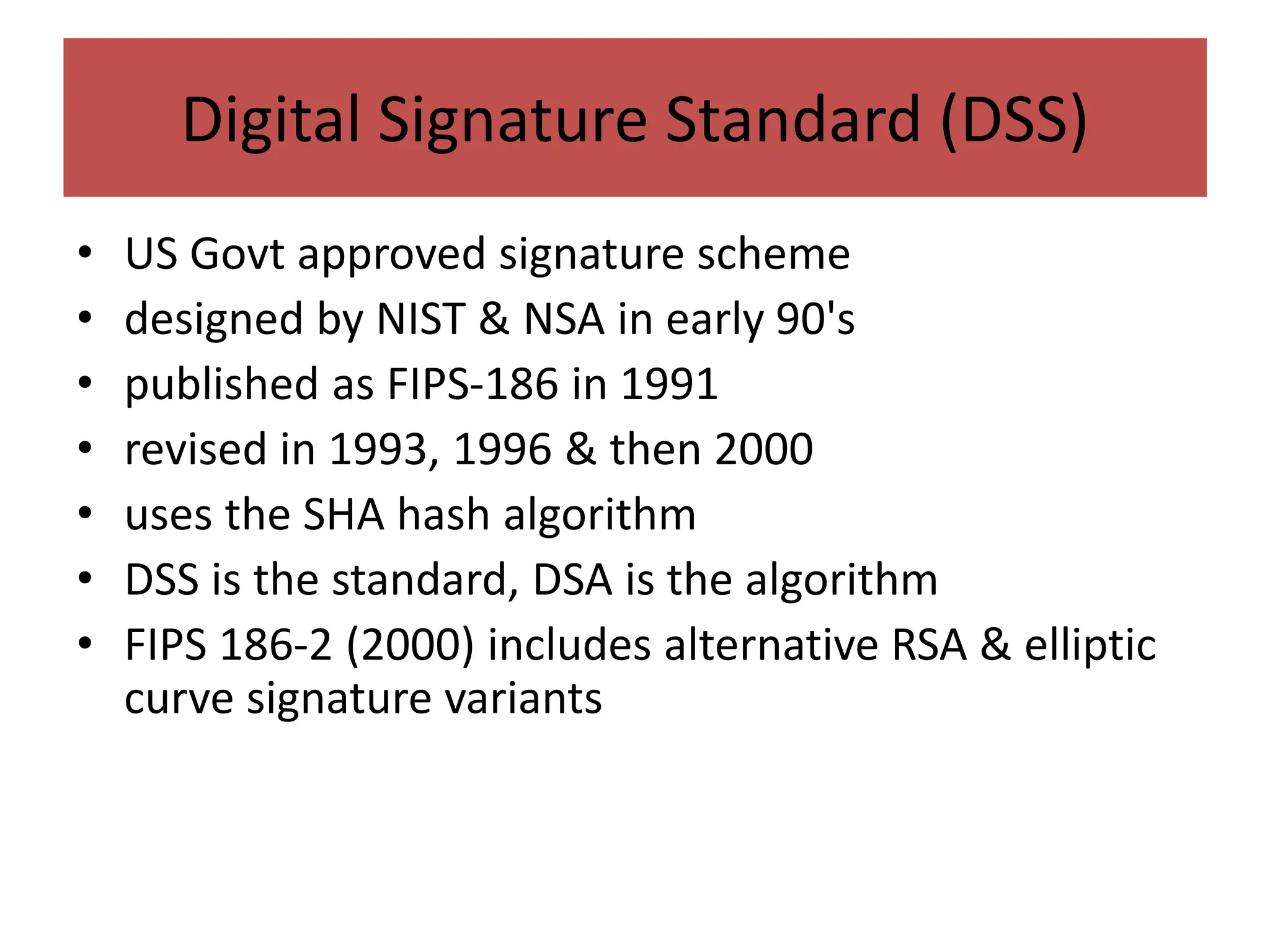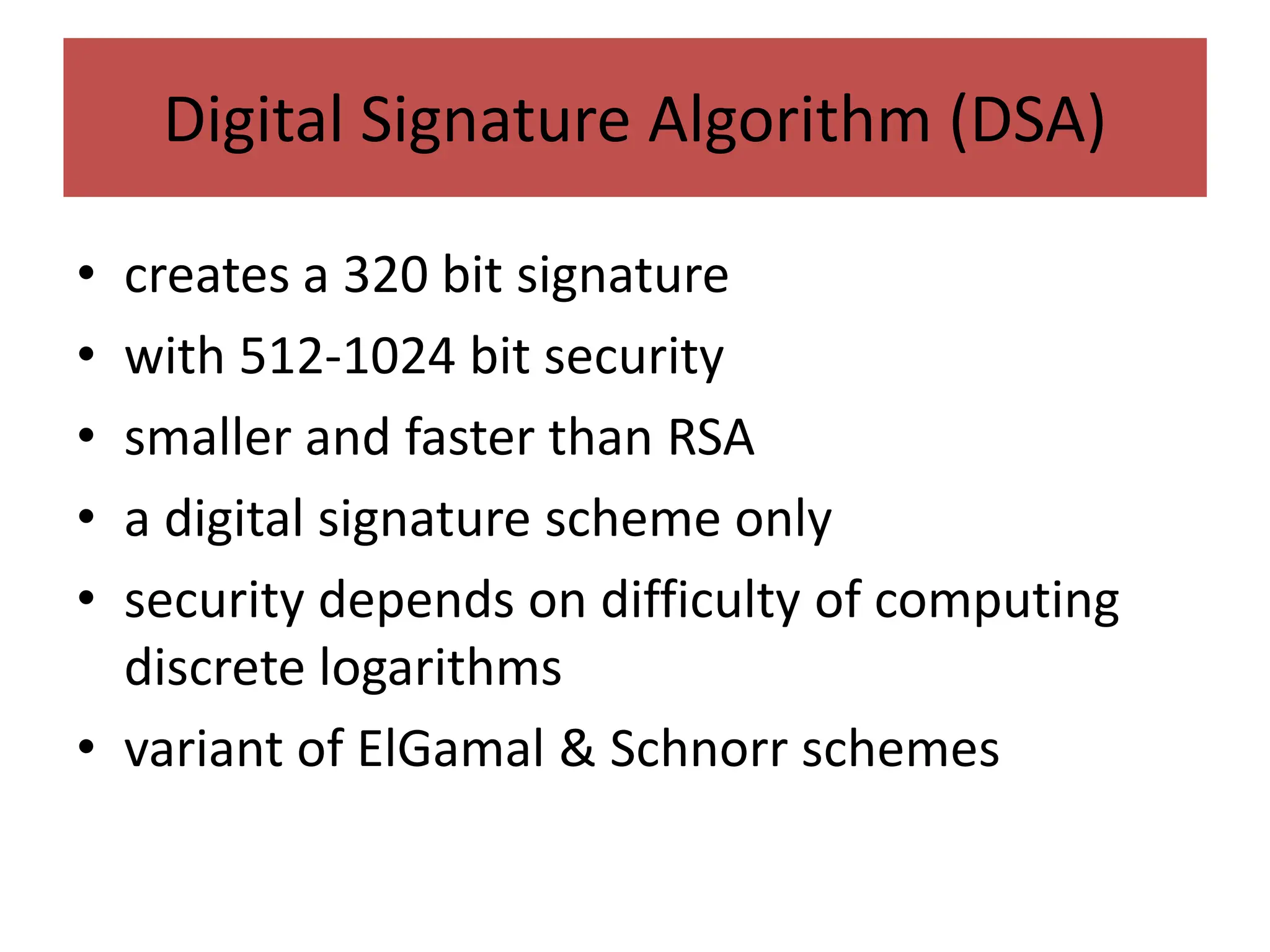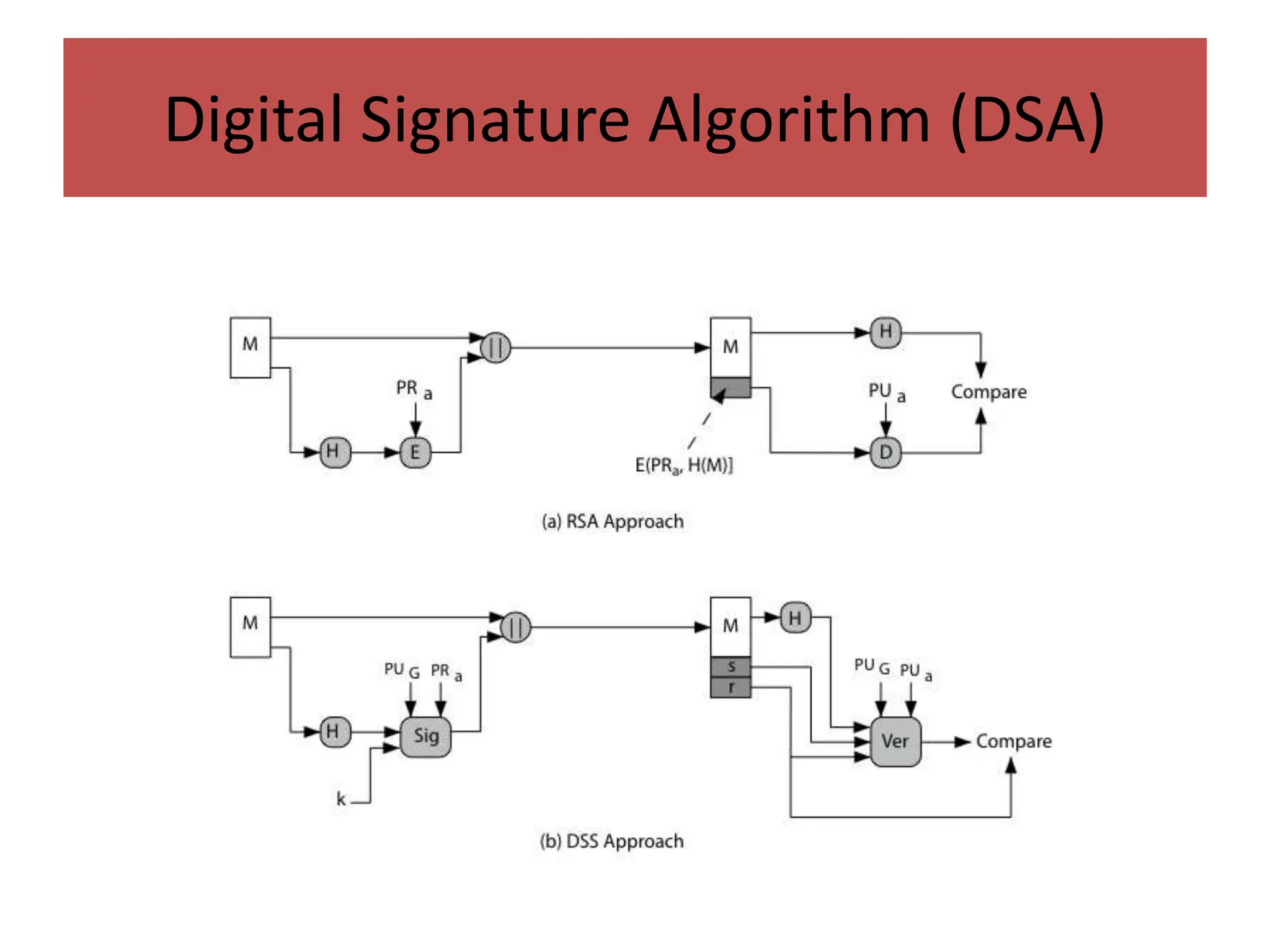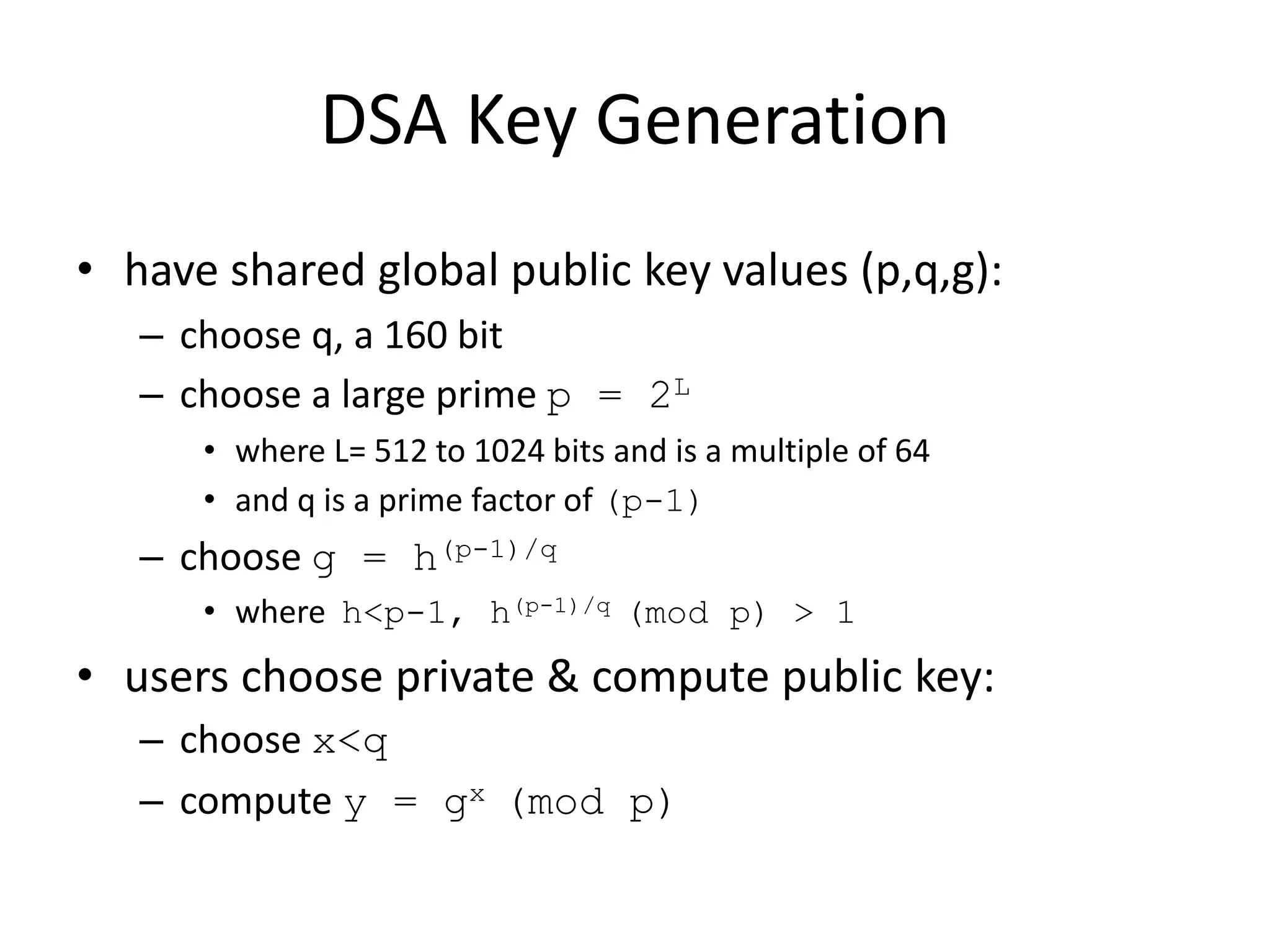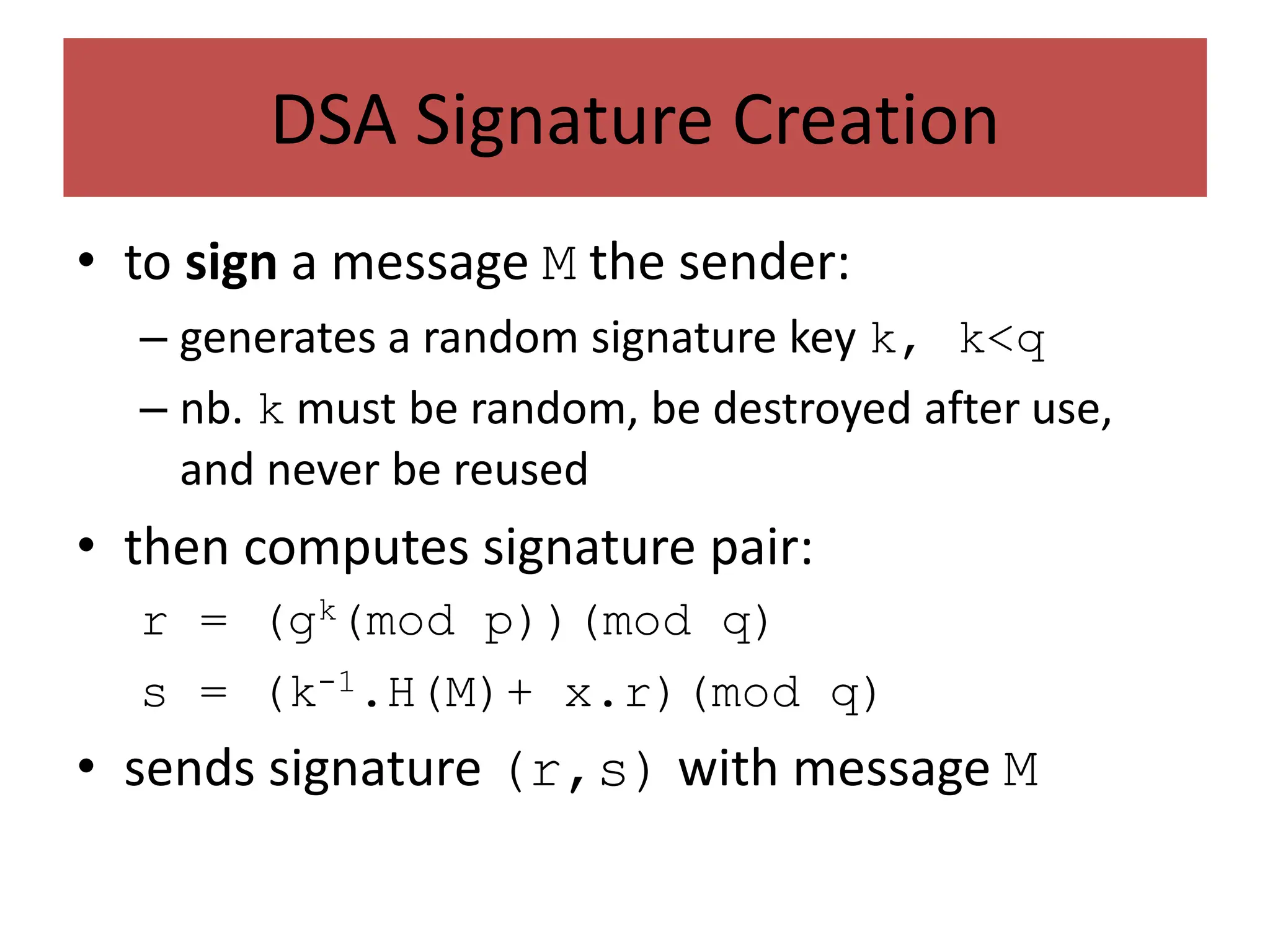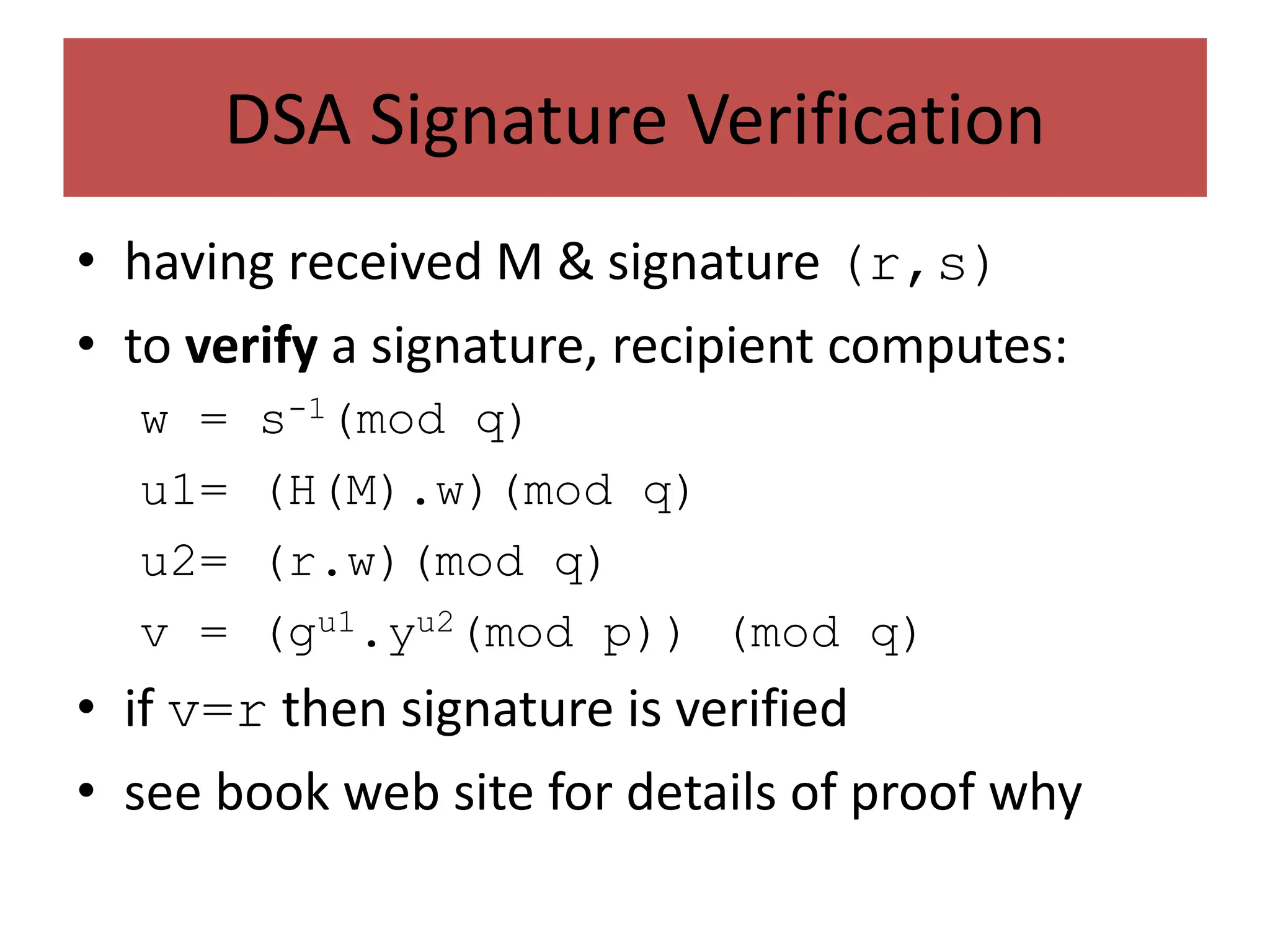This document discusses authentication techniques including message authentication codes (MACs) and hash functions. It provides details on:
1. MACs generate a signature for a message to validate authenticity and integrity. Common MAC algorithms discussed are HMAC and CMAC.
2. Hash functions condense messages to fixed lengths. Popular hash functions discussed are MD5, SHA, and their design and security properties.
3. Digital signatures combine hash functions with asymmetric encryption to provide authentication, integrity, and non-repudiation. Signature protocols like DSS are mentioned.
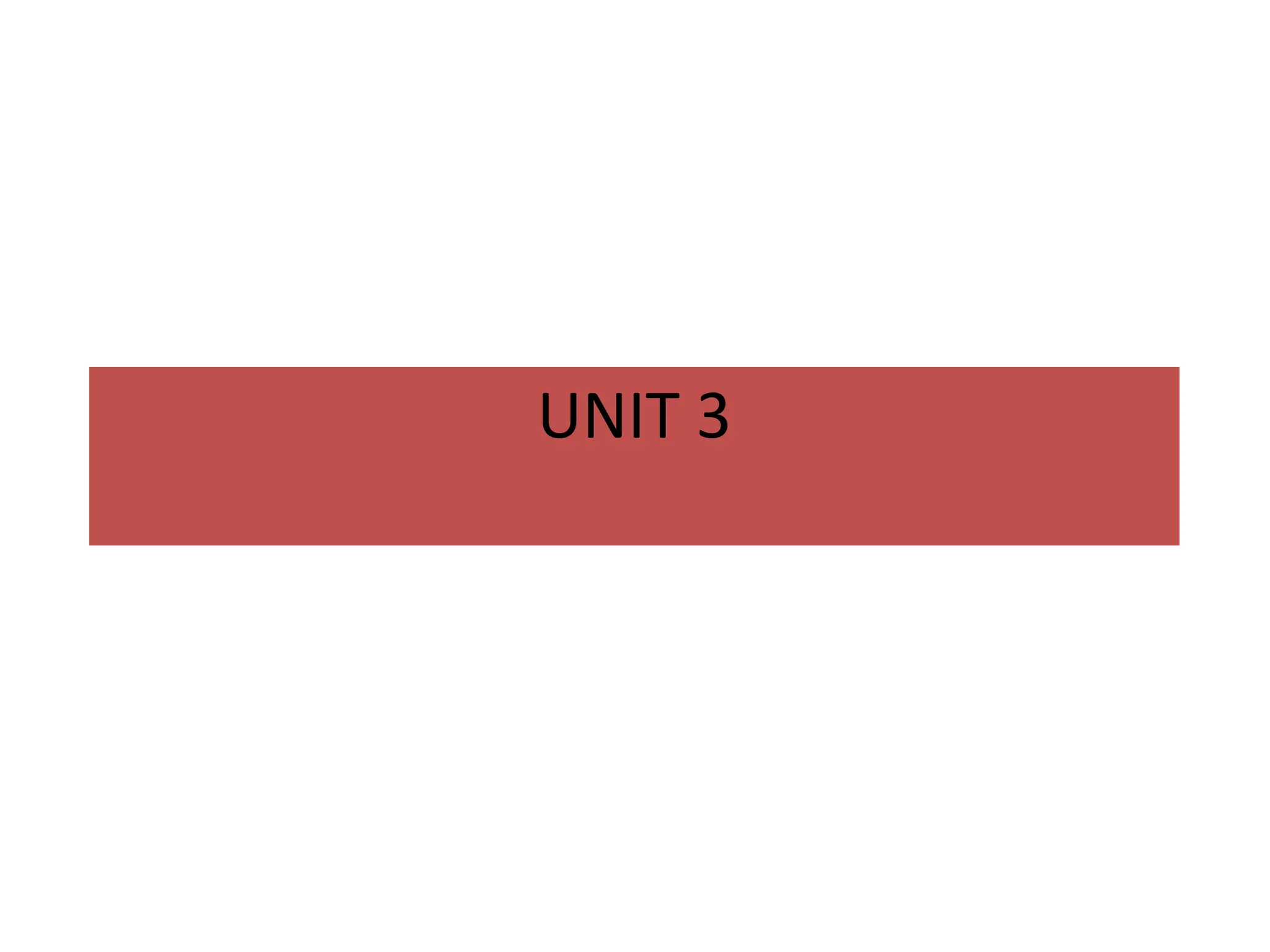
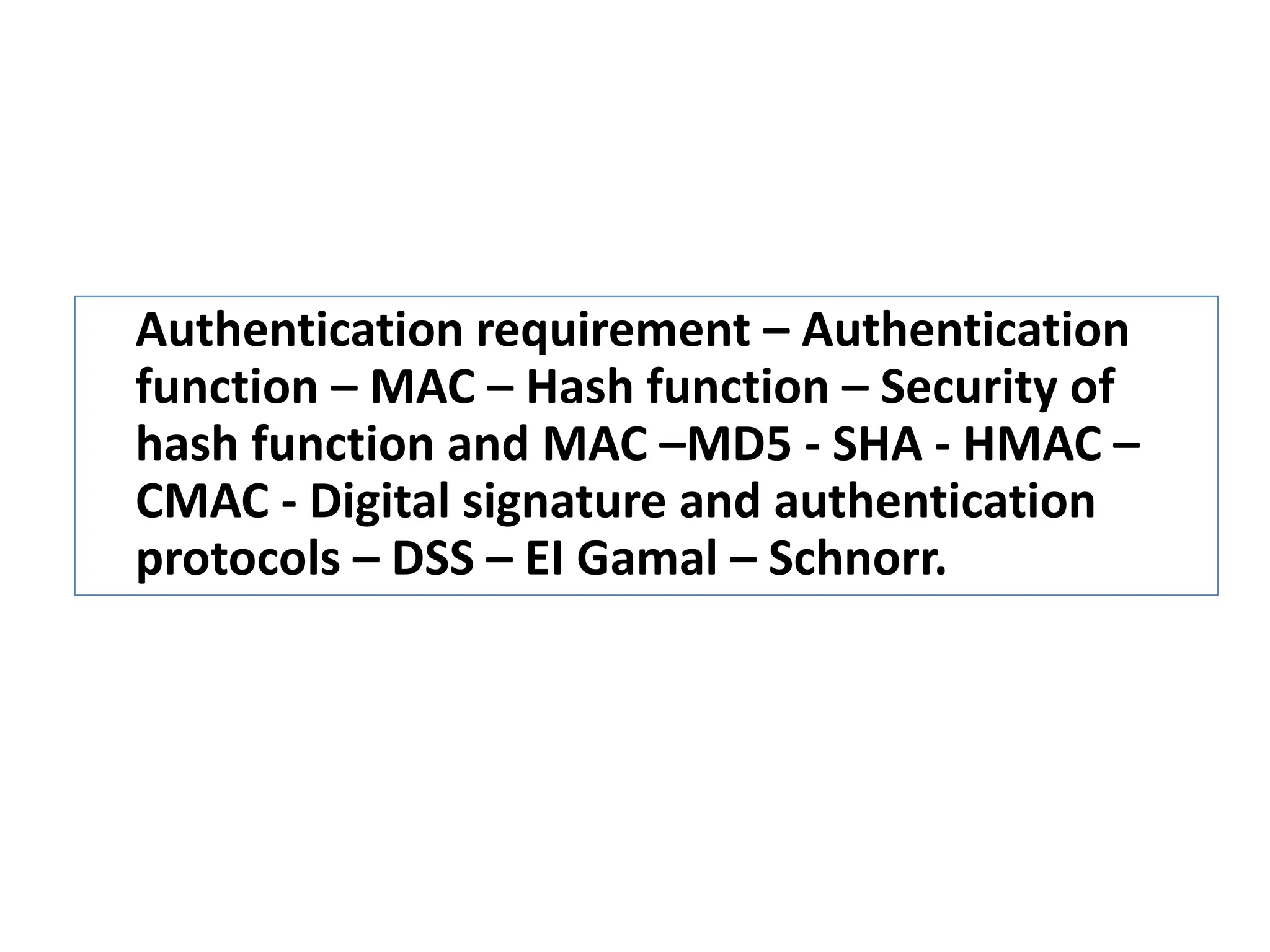


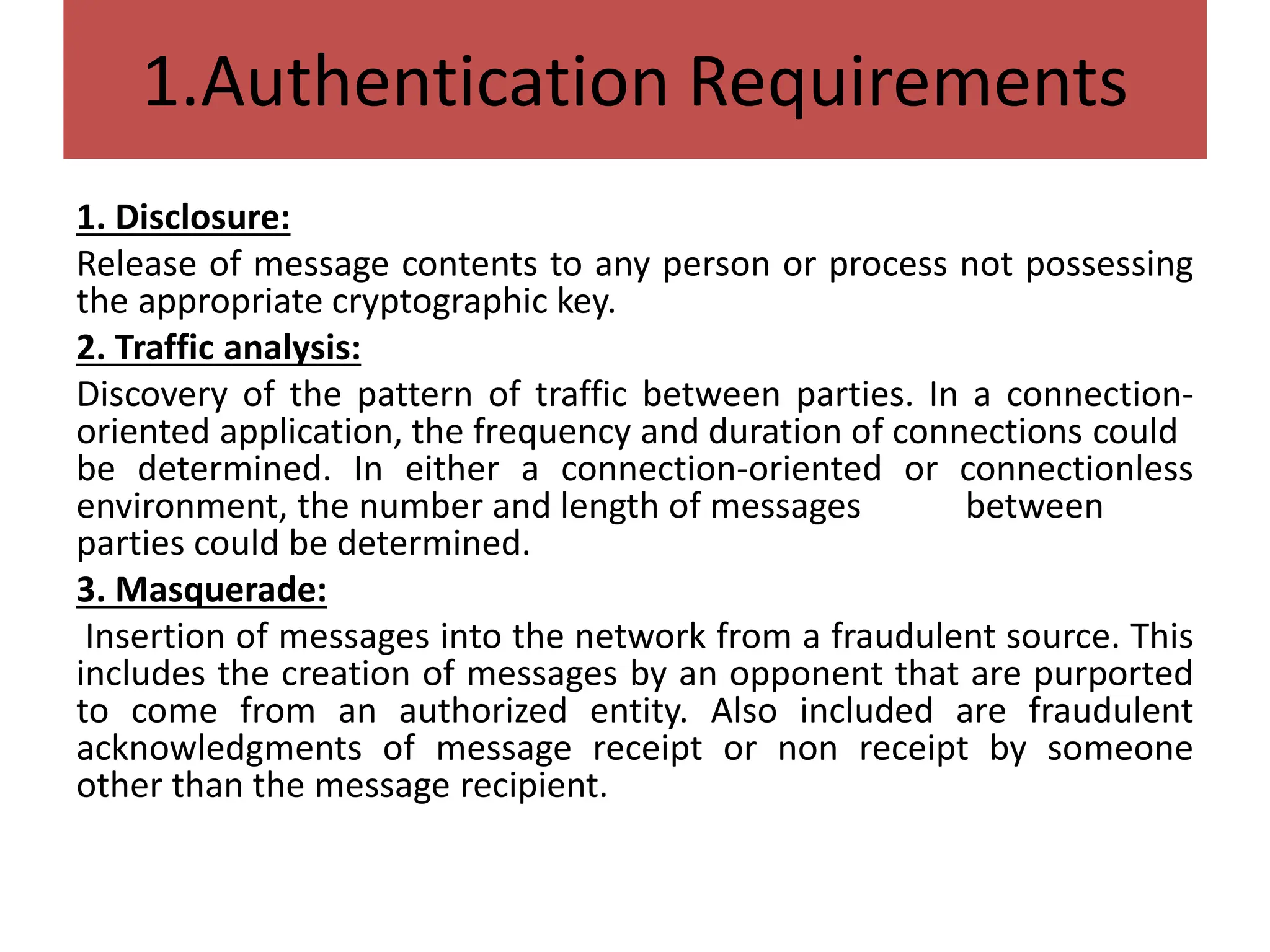
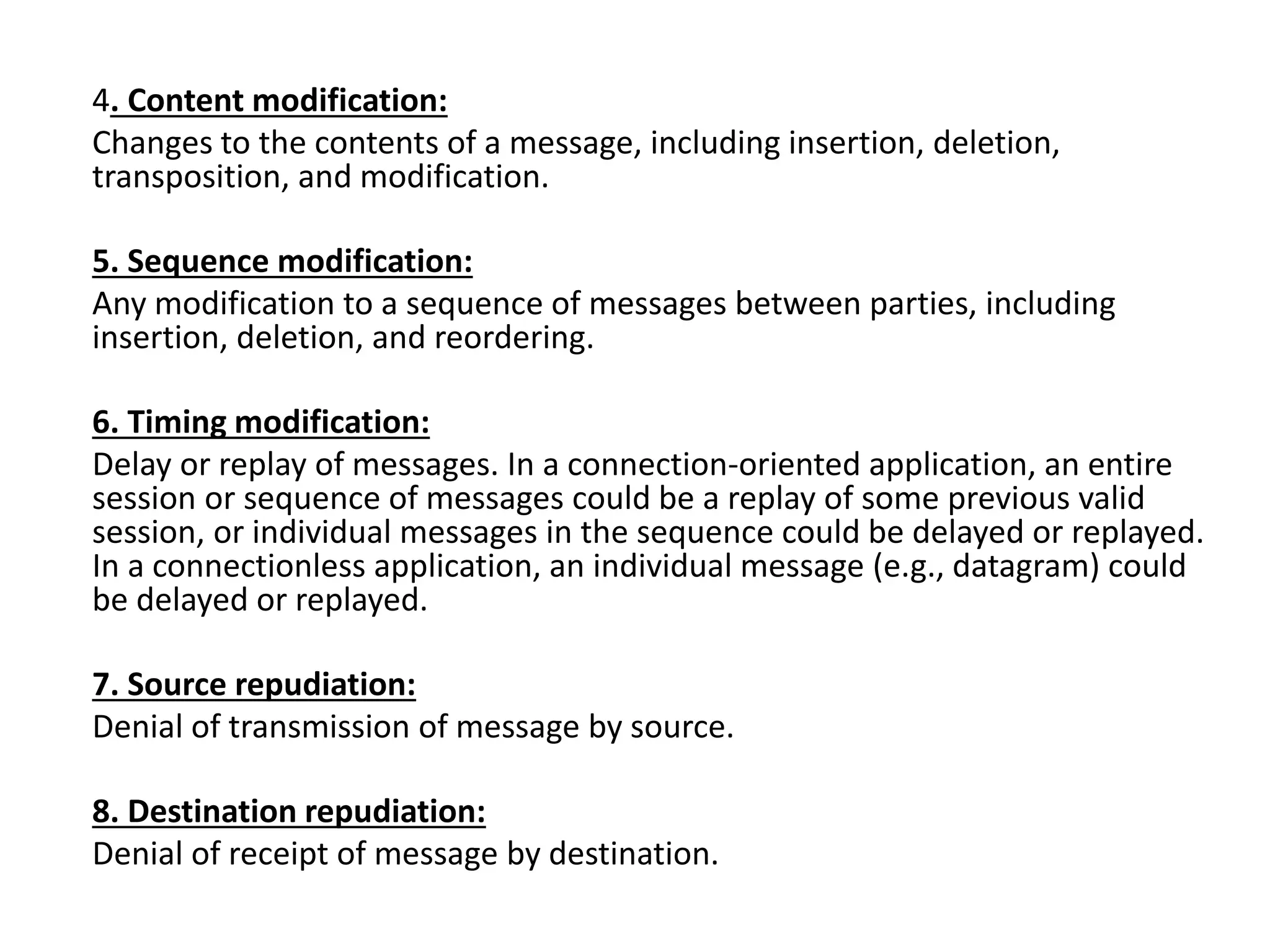
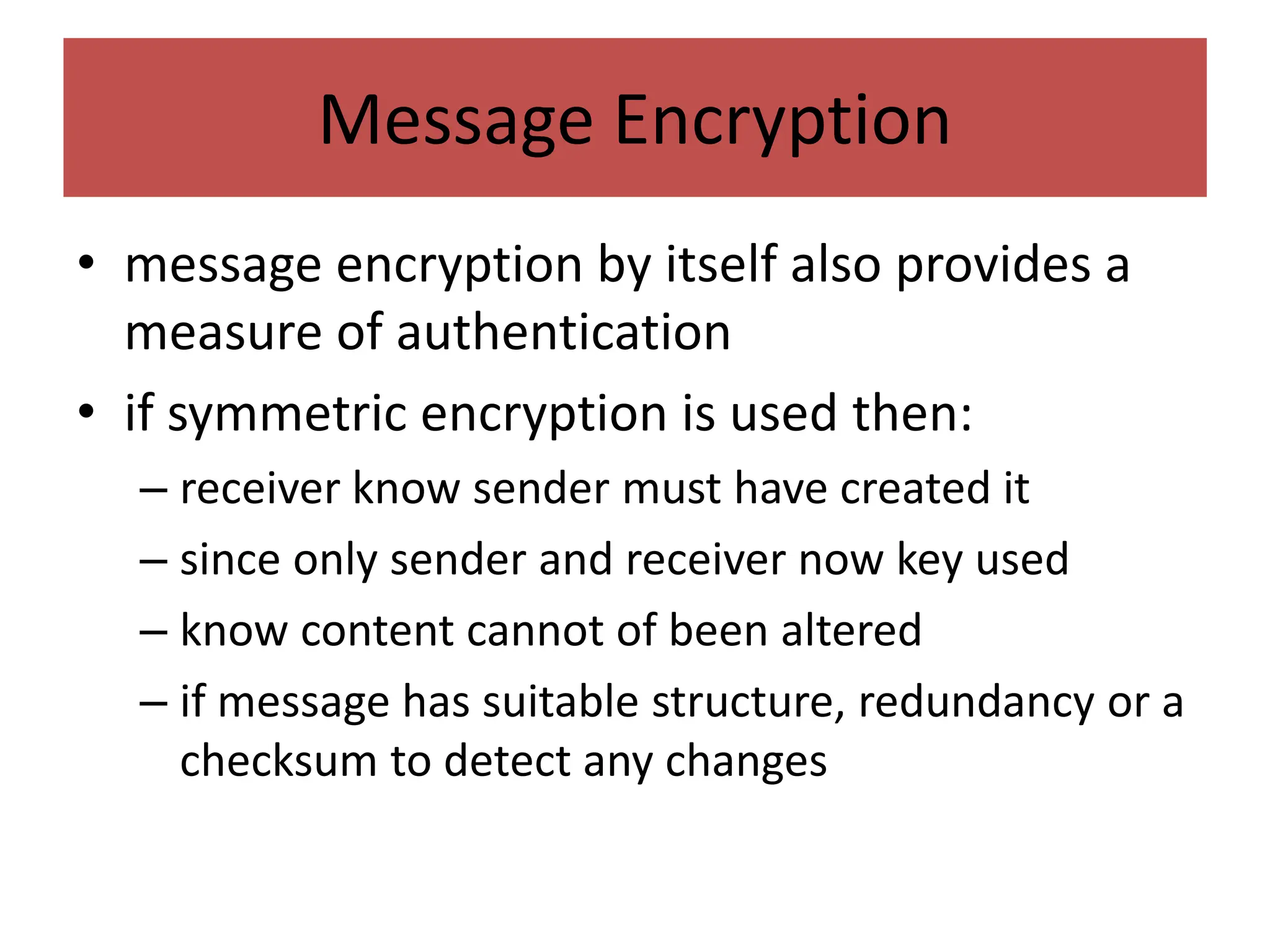
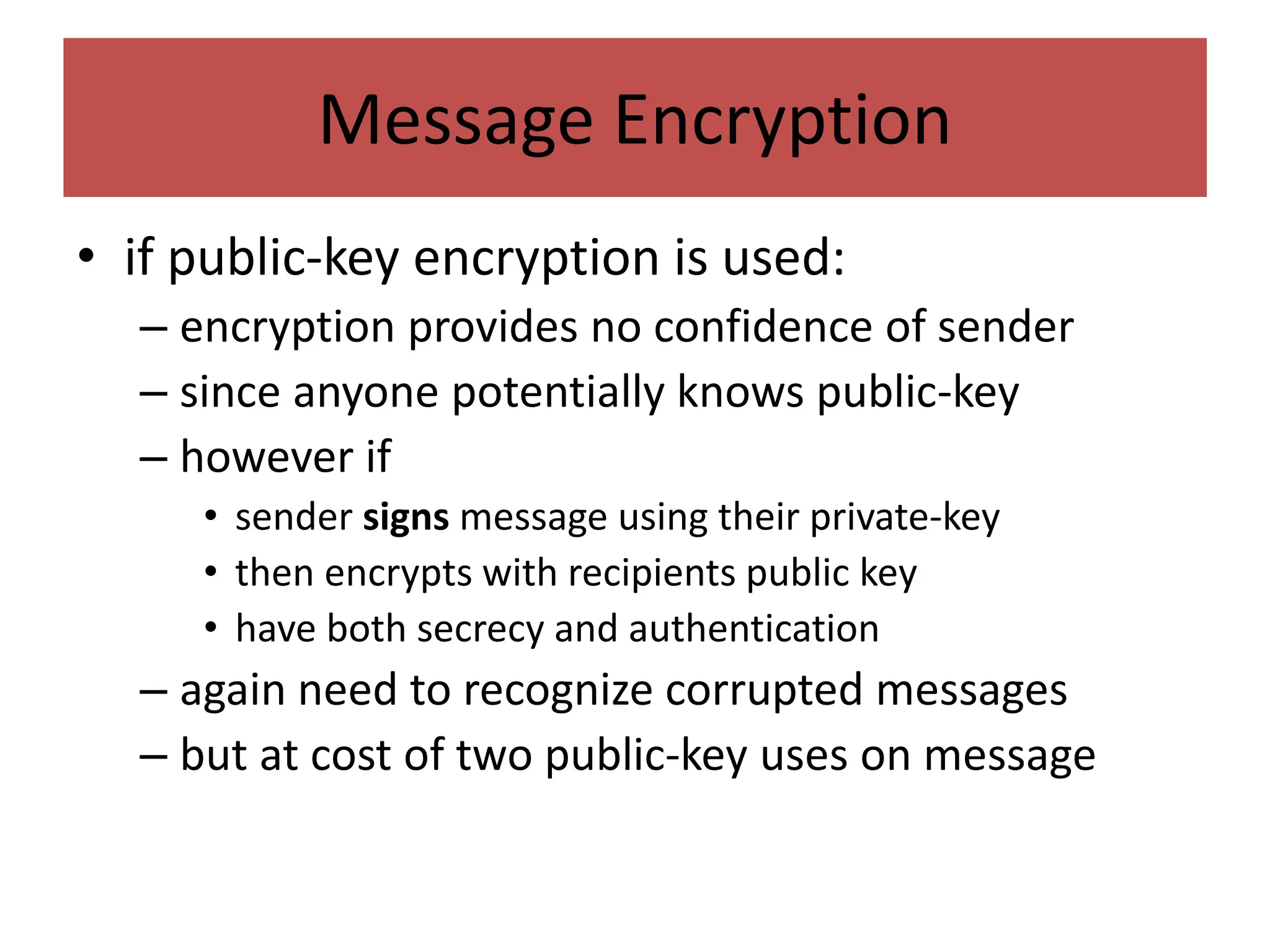
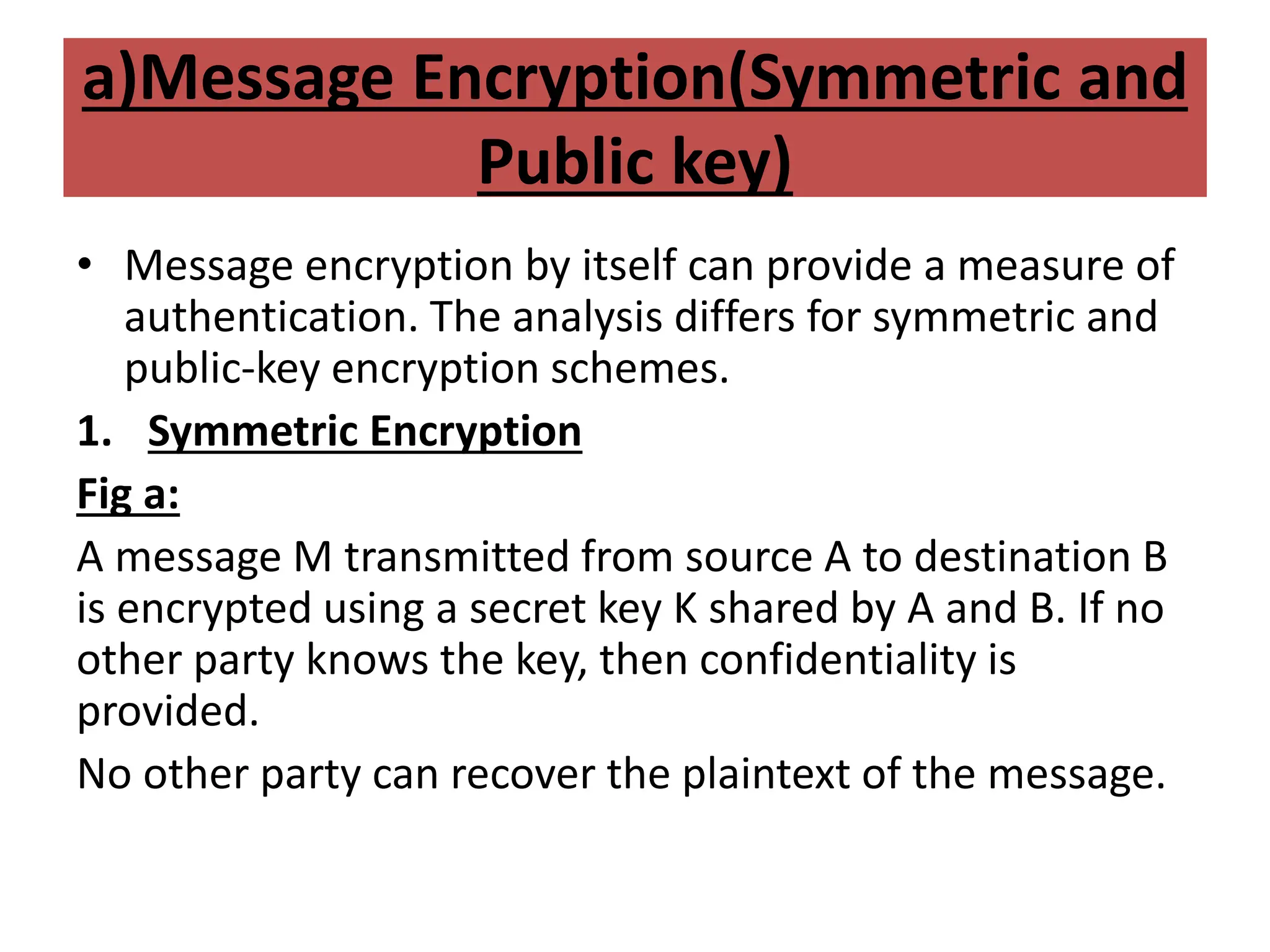
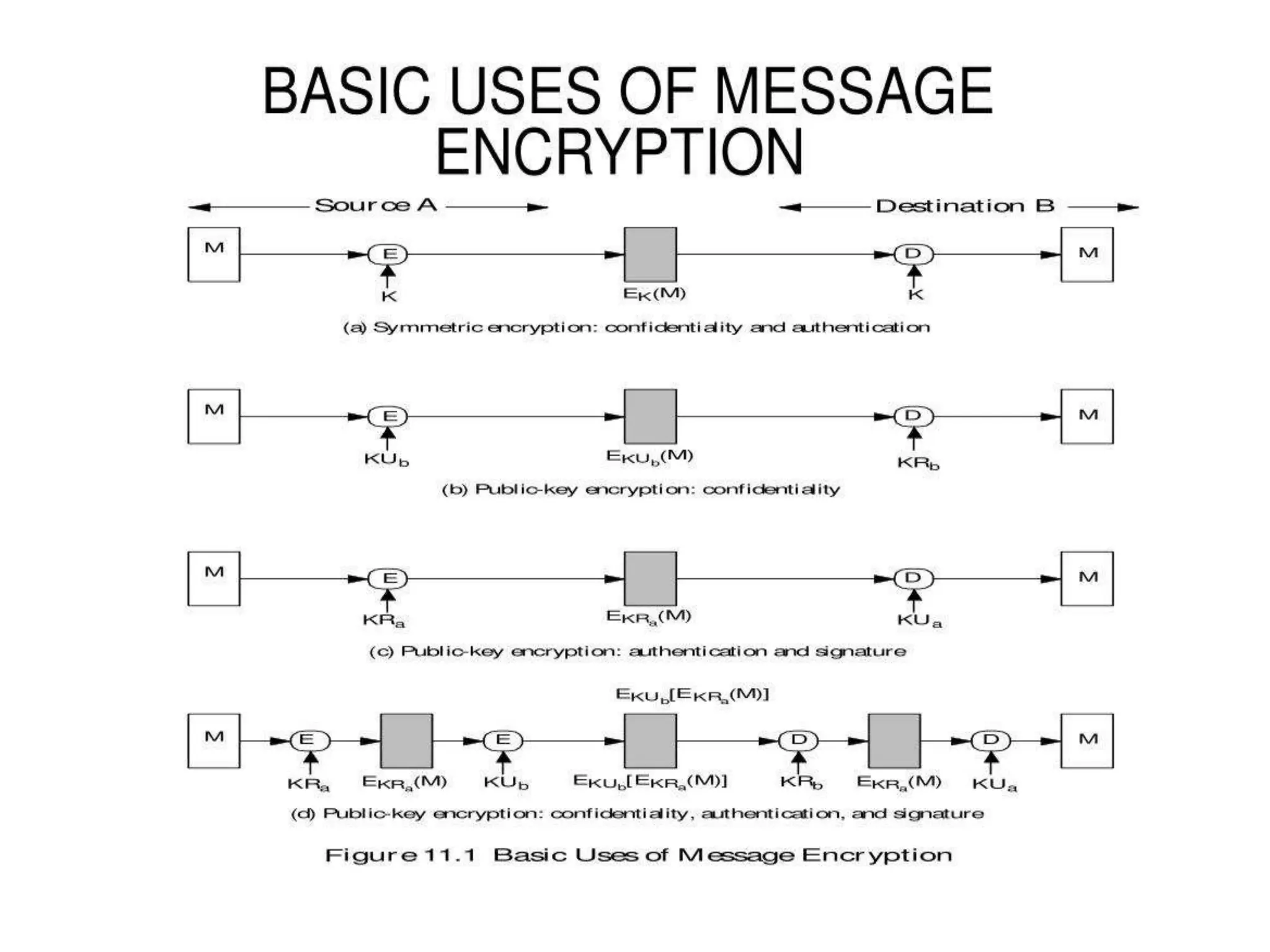
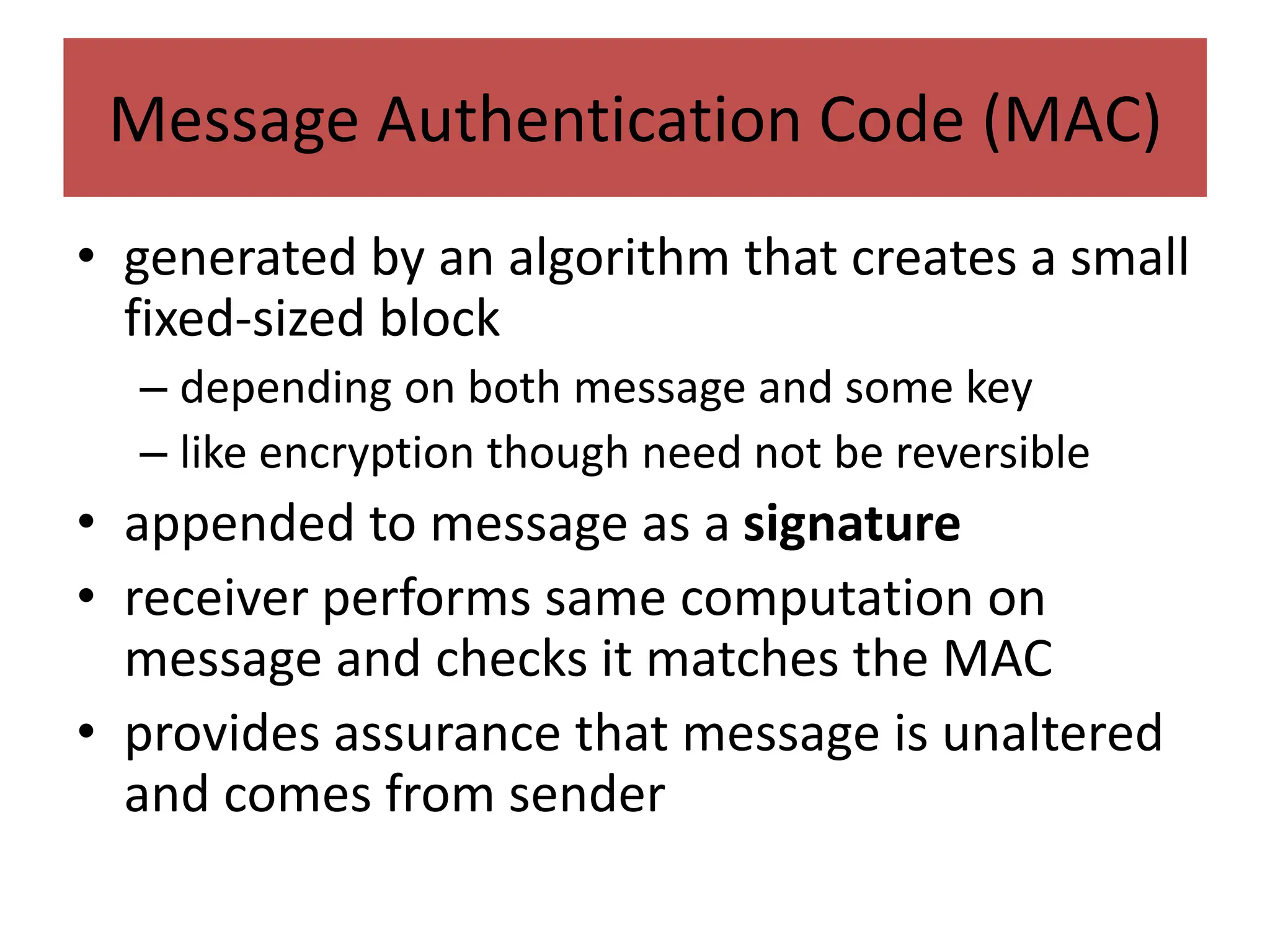
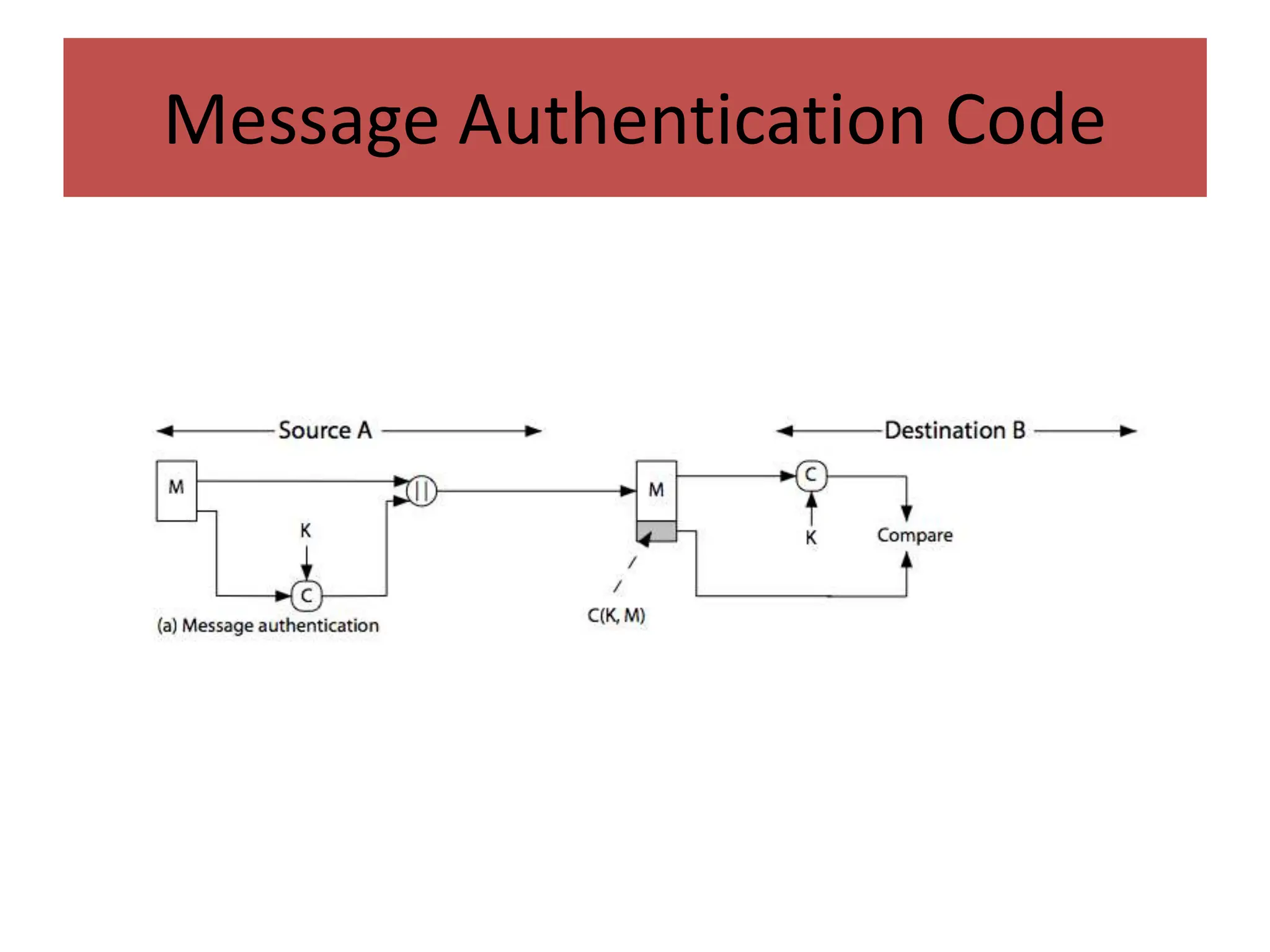

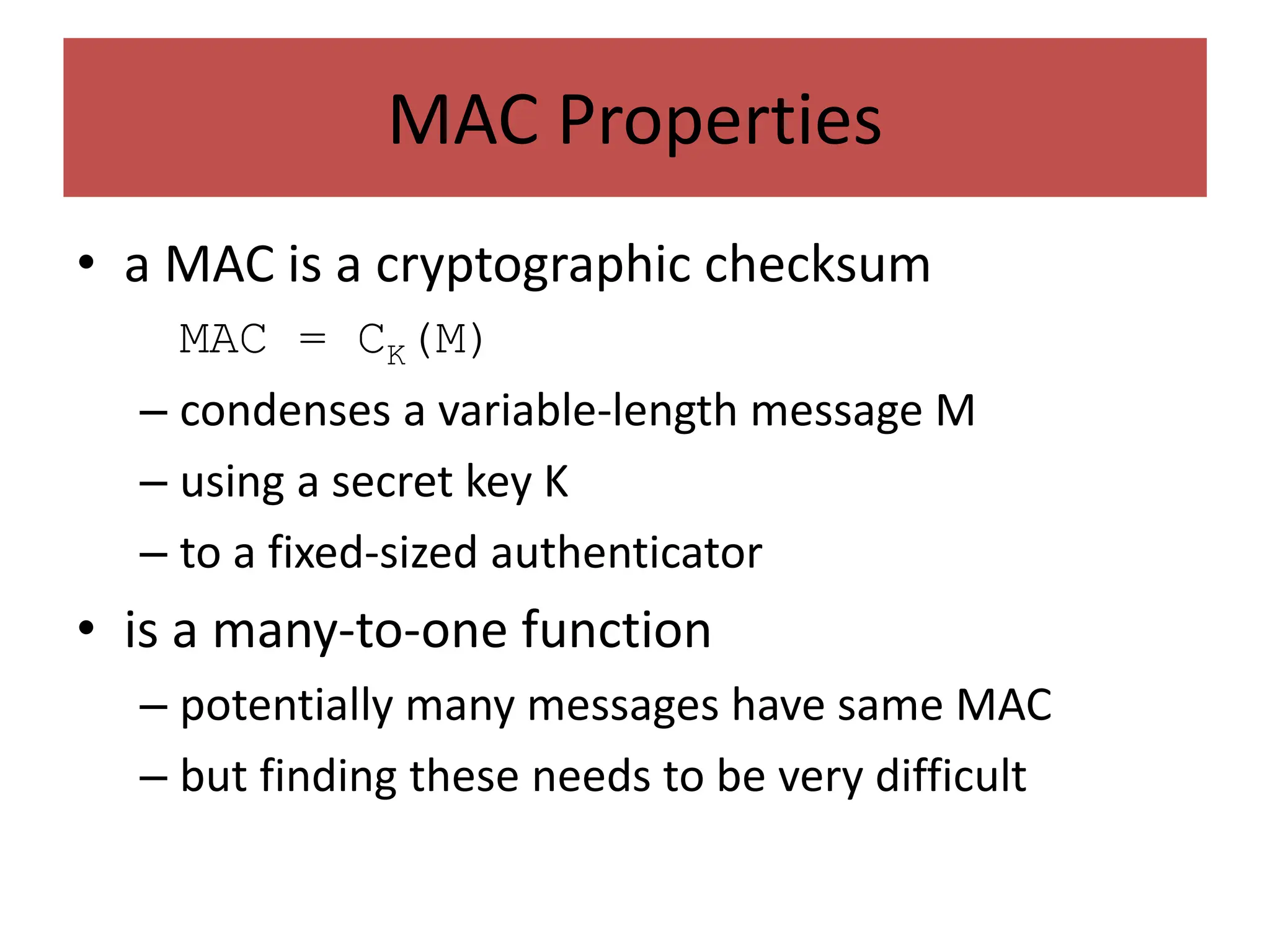
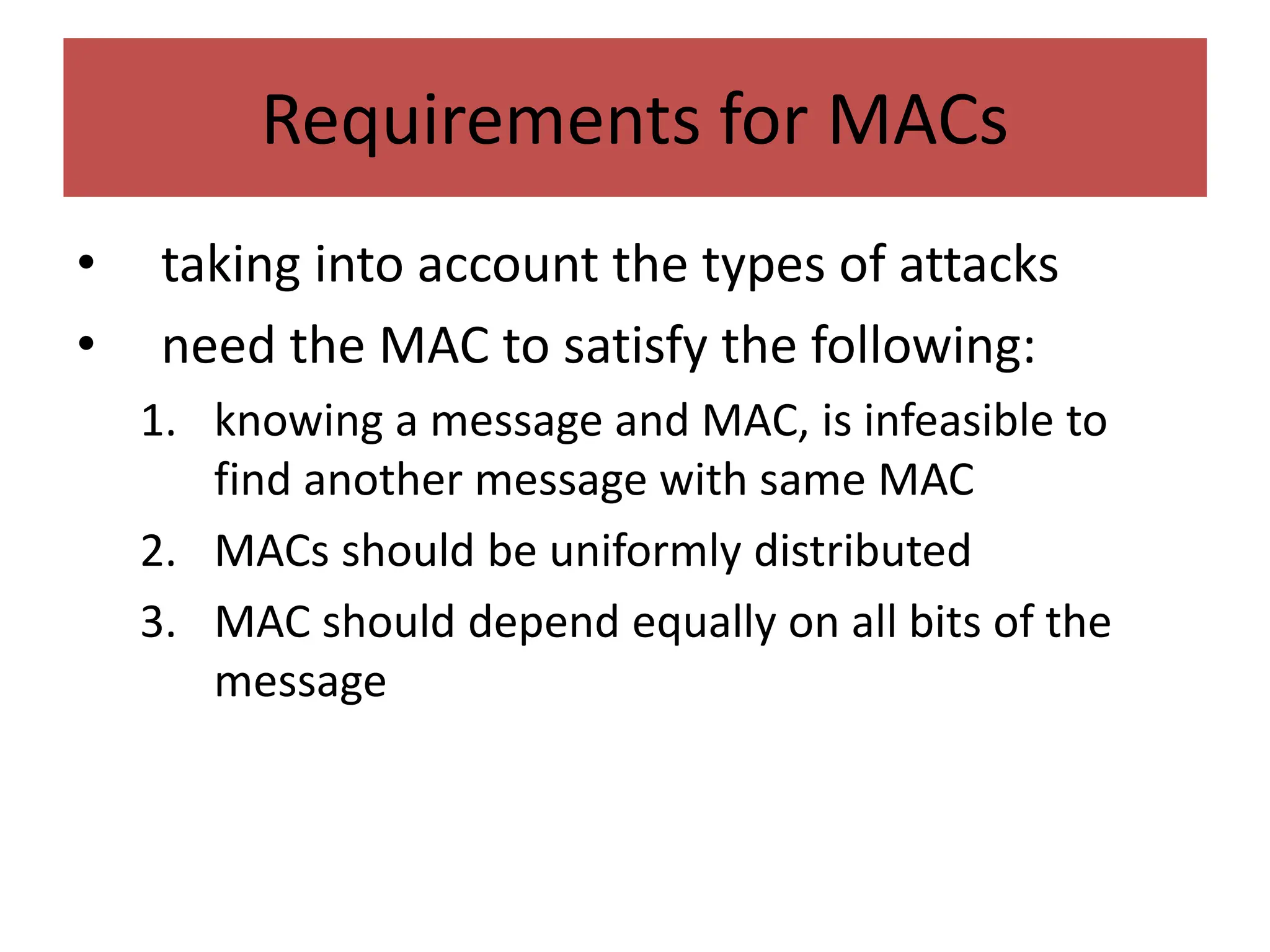

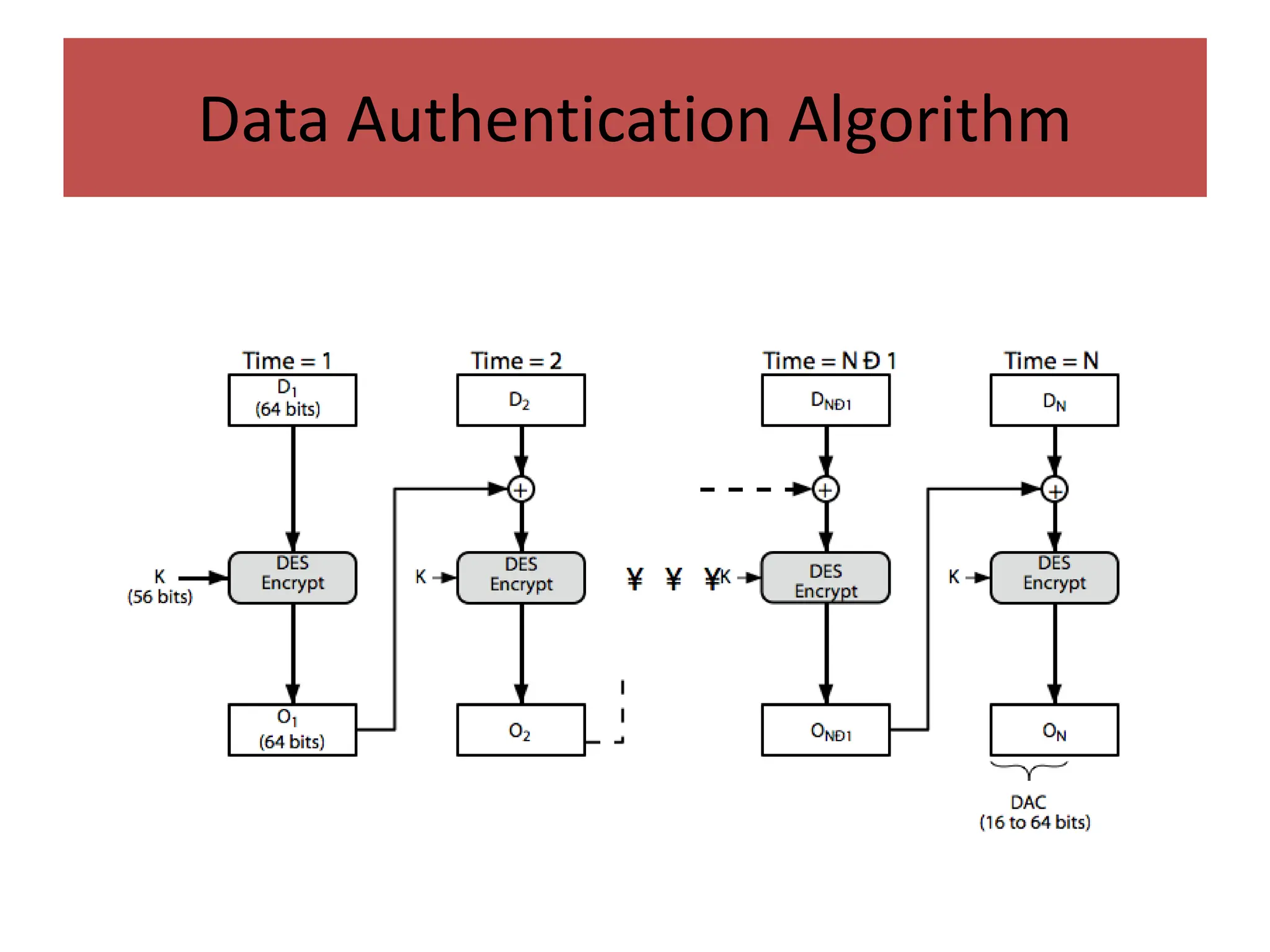
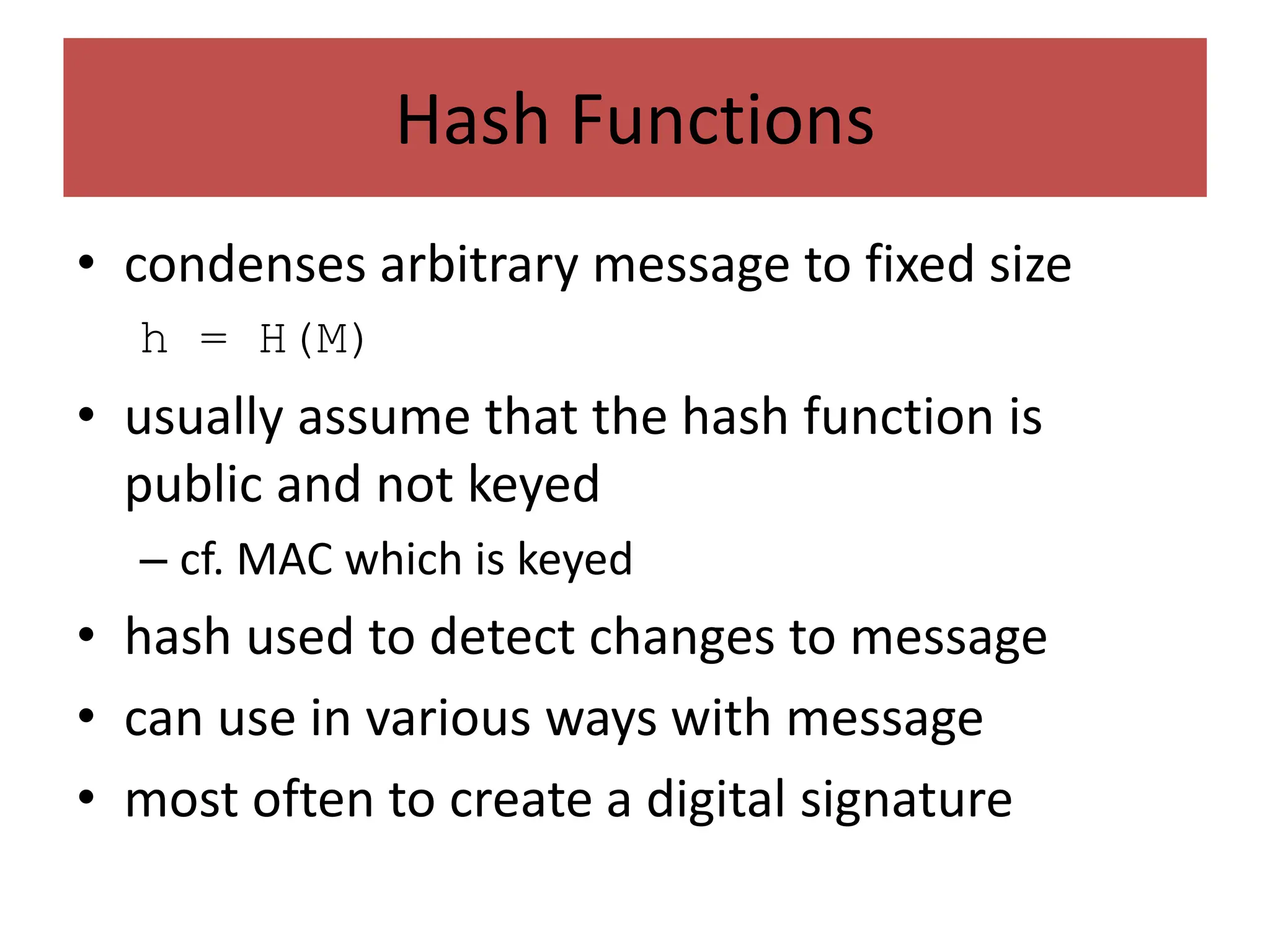
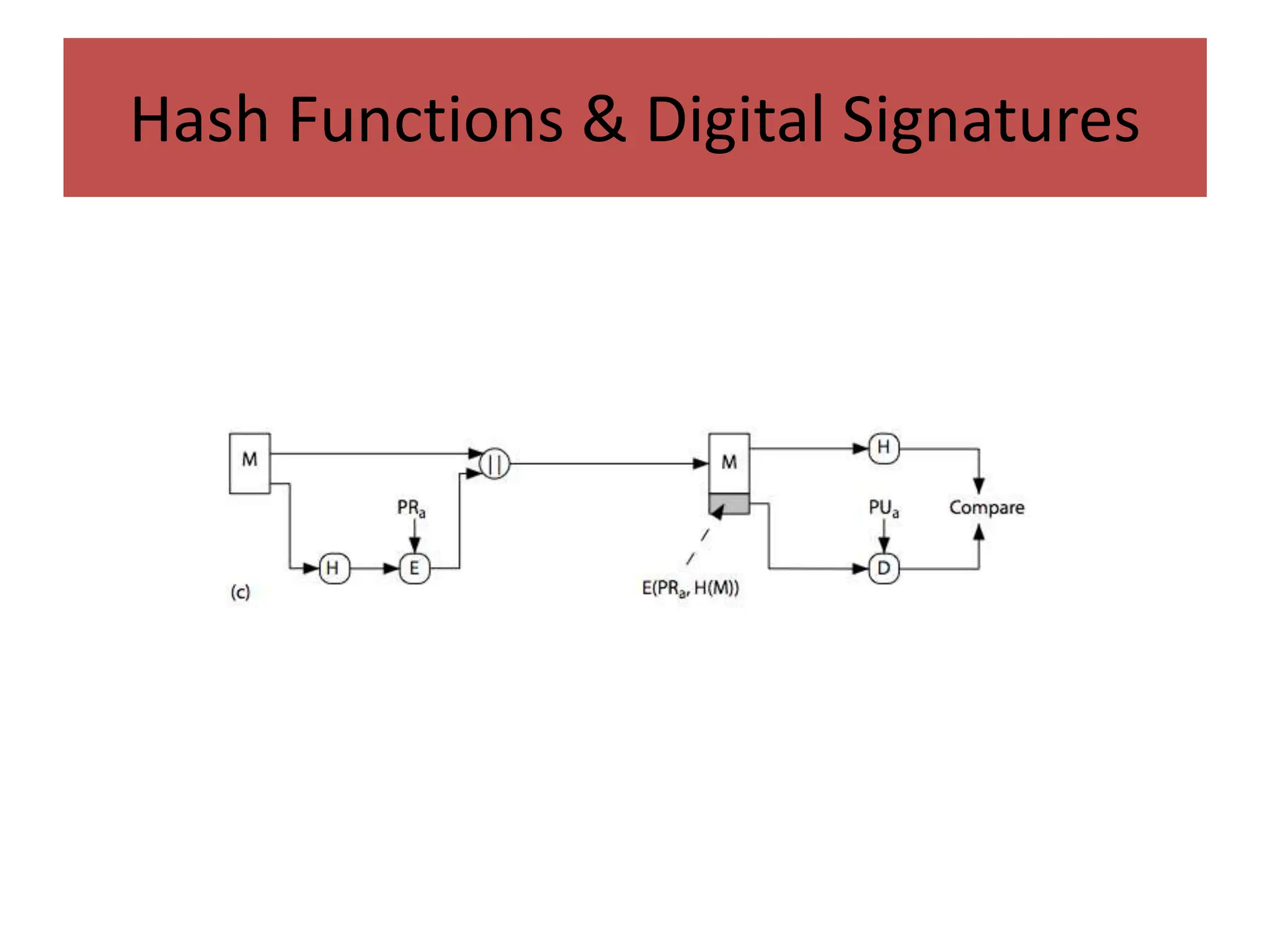
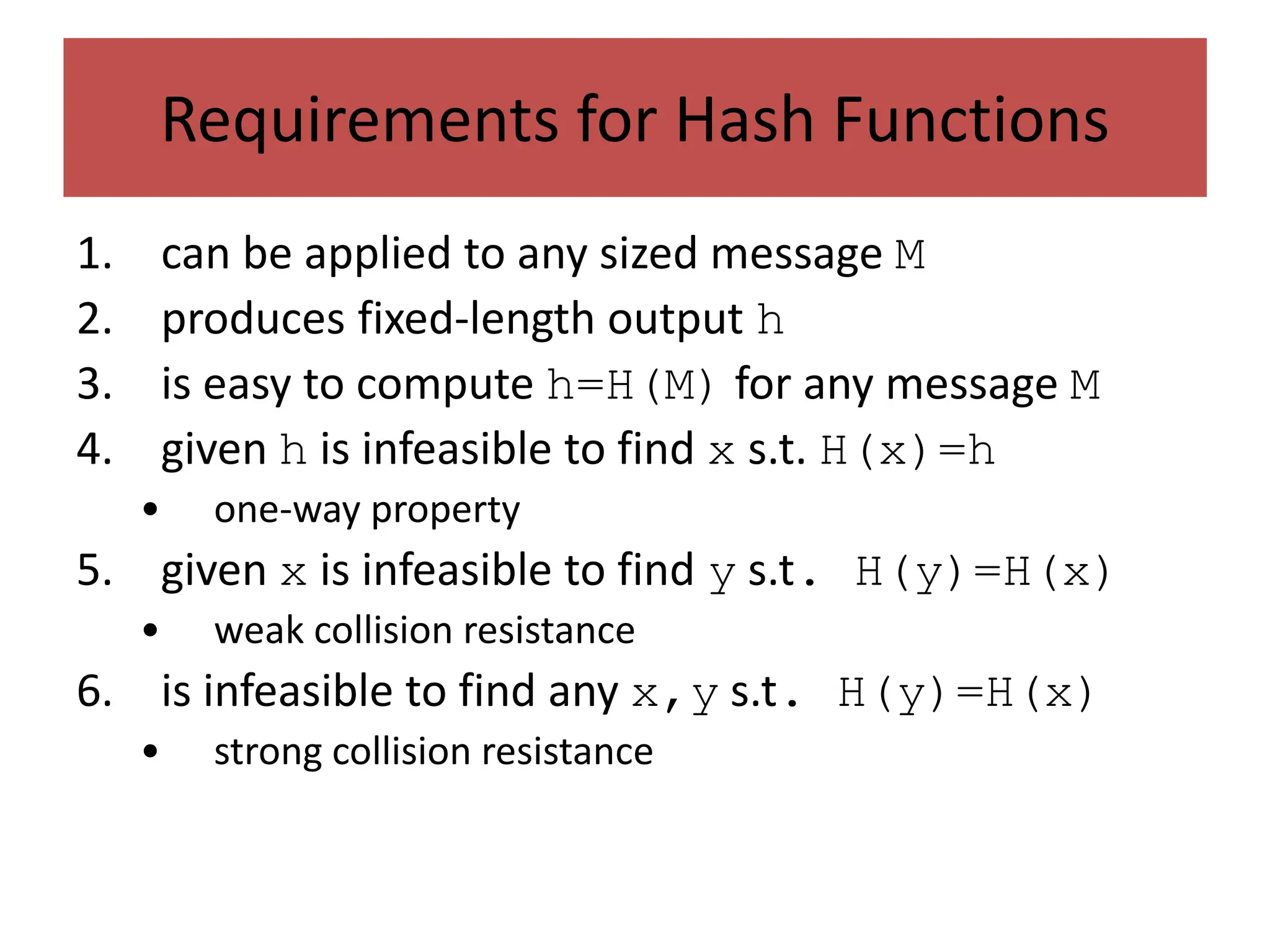
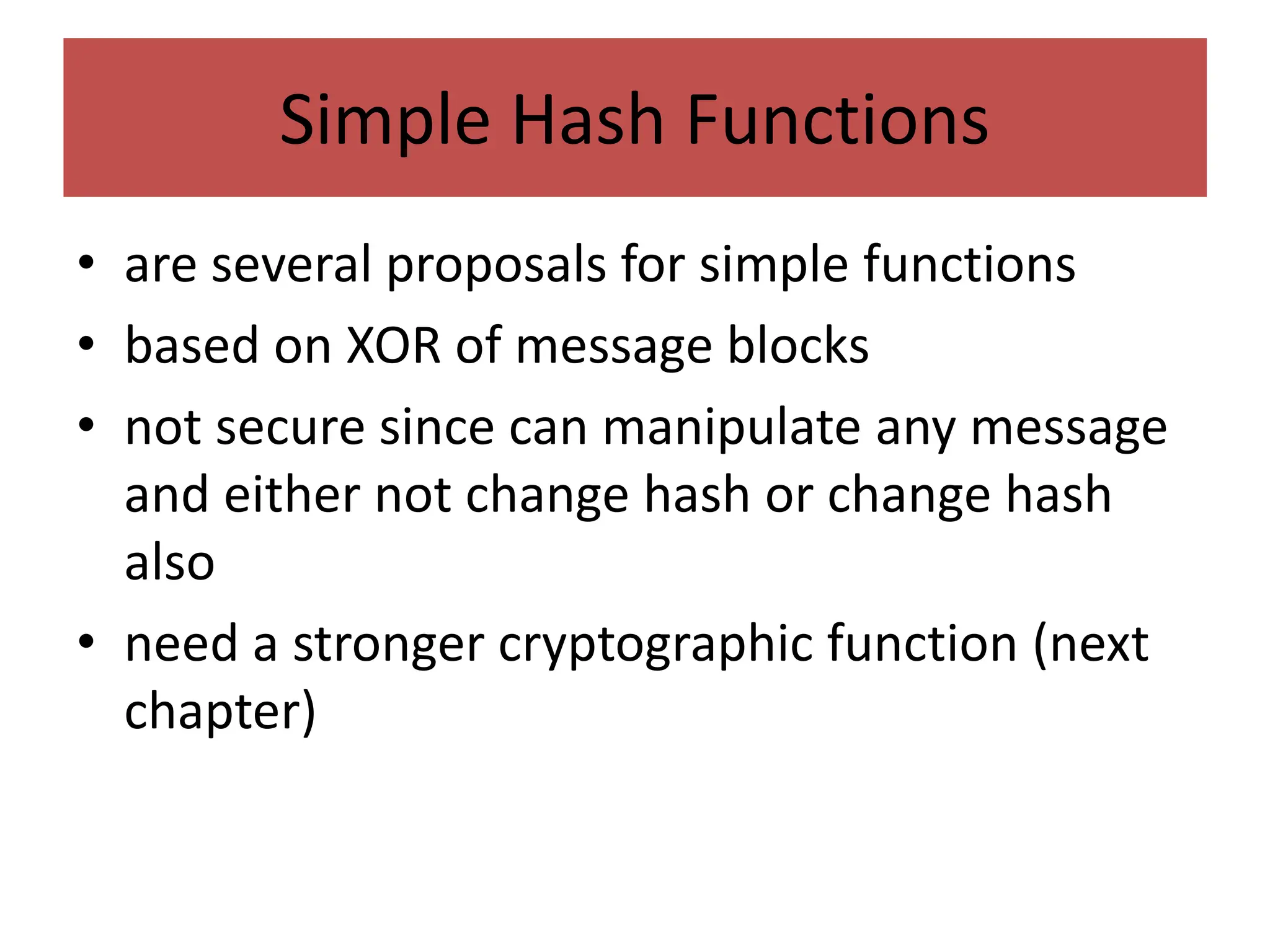
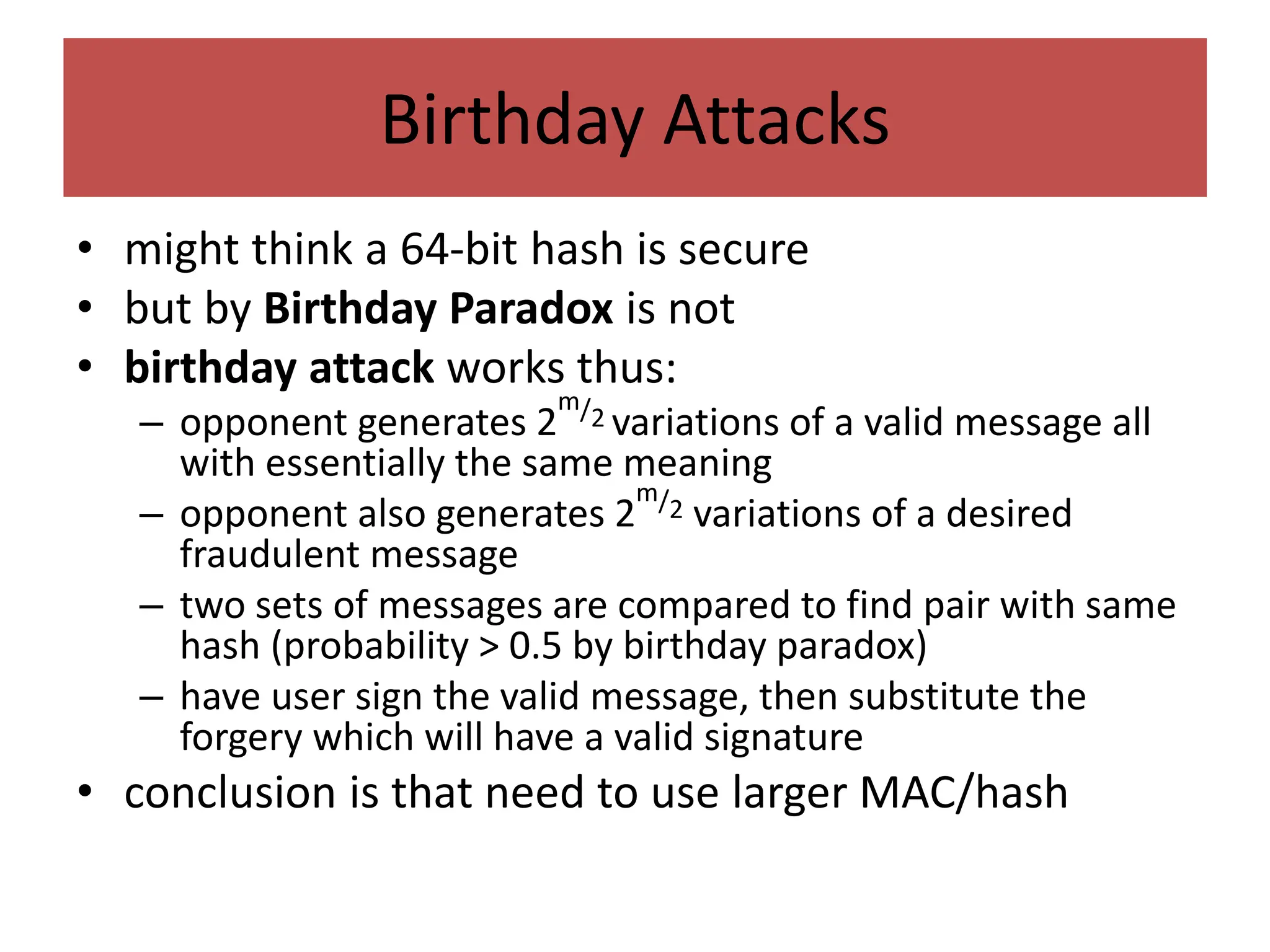
![Block Ciphers as Hash Functions
• can use block ciphers as hash functions
– using H0=0 and zero-pad of final block
– compute: Hi = EMi
[Hi-1]
– and use final block as the hash value
– similar to CBC but without a key
• resulting hash is too small (64-bit)
– both due to direct birthday attack
– and to “meet-in-the-middle” attack
• other variants also susceptible to attack](https://image.slidesharecdn.com/unit3class1-240403081432-019ab78d/75/UNIT3_class-1-ppt-CRYPTOGRAPHY-NOTES-AND-NETWORK-23-2048.jpg)

![Hash Functions & MAC Security
• cryptanalytic attacks exploit structure
– like block ciphers want brute-force attacks to be the best
alternative
• have a number of analytic attacks on iterated hash
functions
– CVi = f[CVi-1, Mi]; H(M)=CVN
– typically focus on collisions in function f
– like block ciphers is often composed of rounds
– attacks exploit properties of round functions](https://image.slidesharecdn.com/unit3class1-240403081432-019ab78d/75/UNIT3_class-1-ppt-CRYPTOGRAPHY-NOTES-AND-NETWORK-25-2048.jpg)
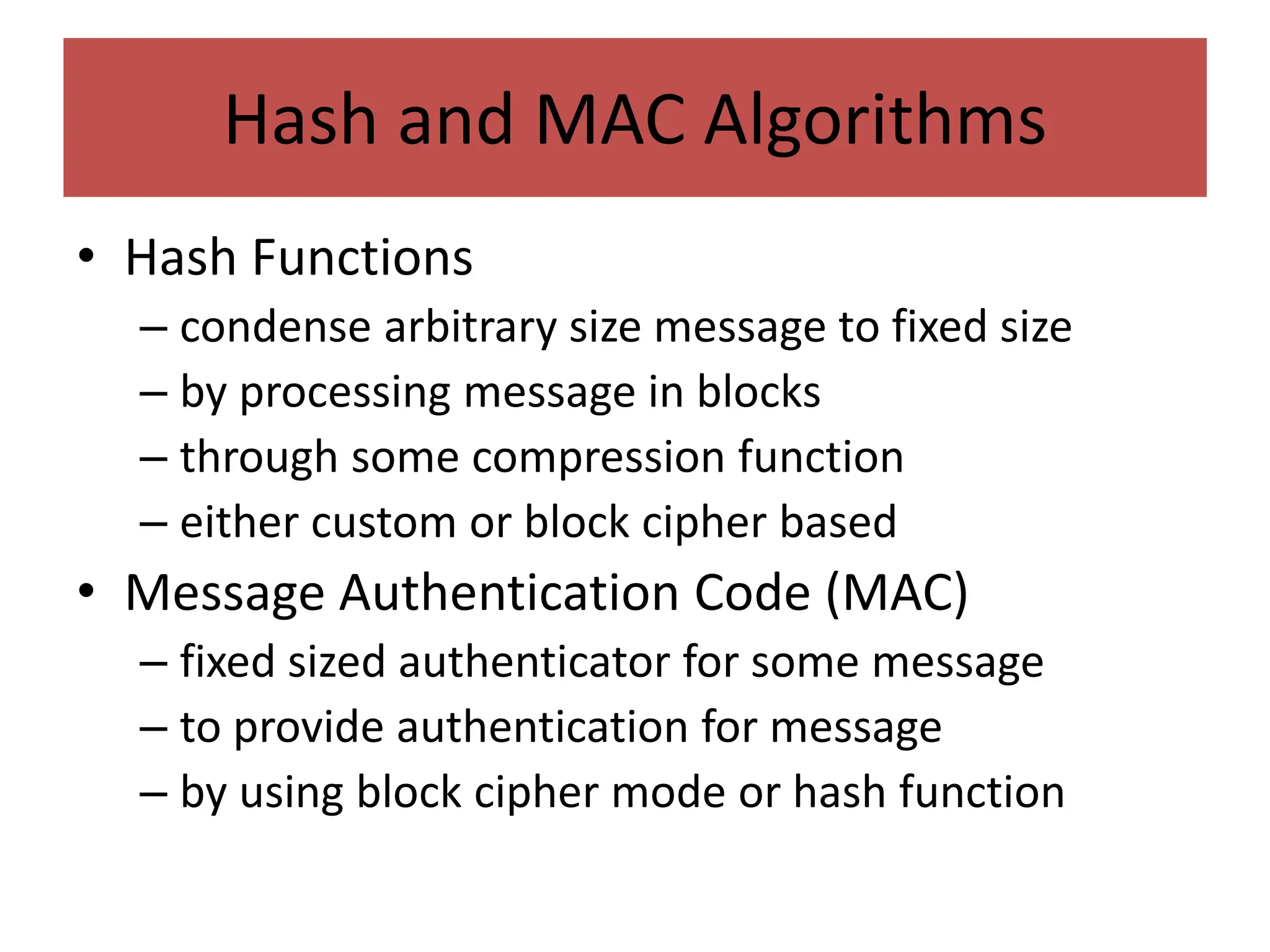
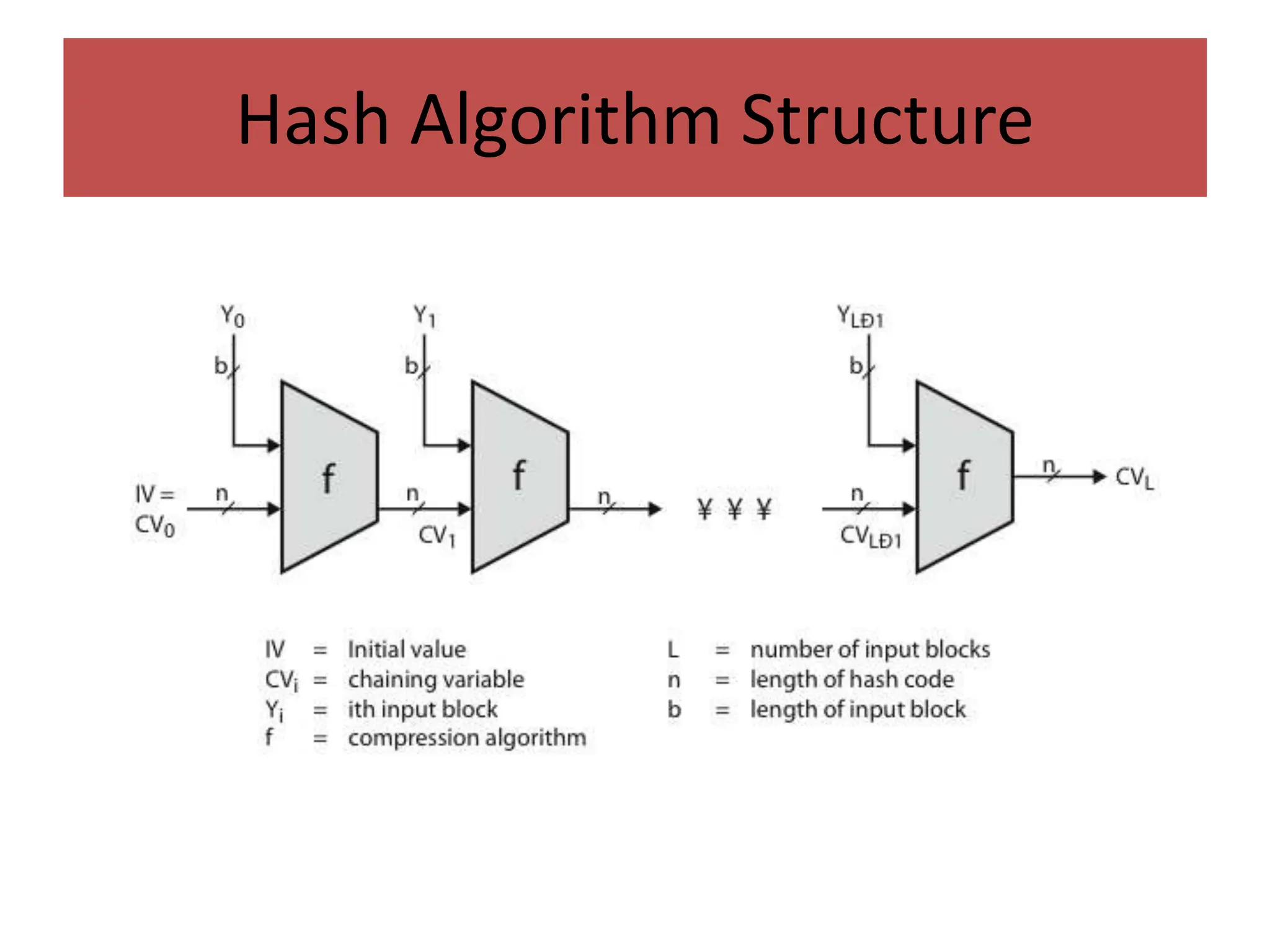
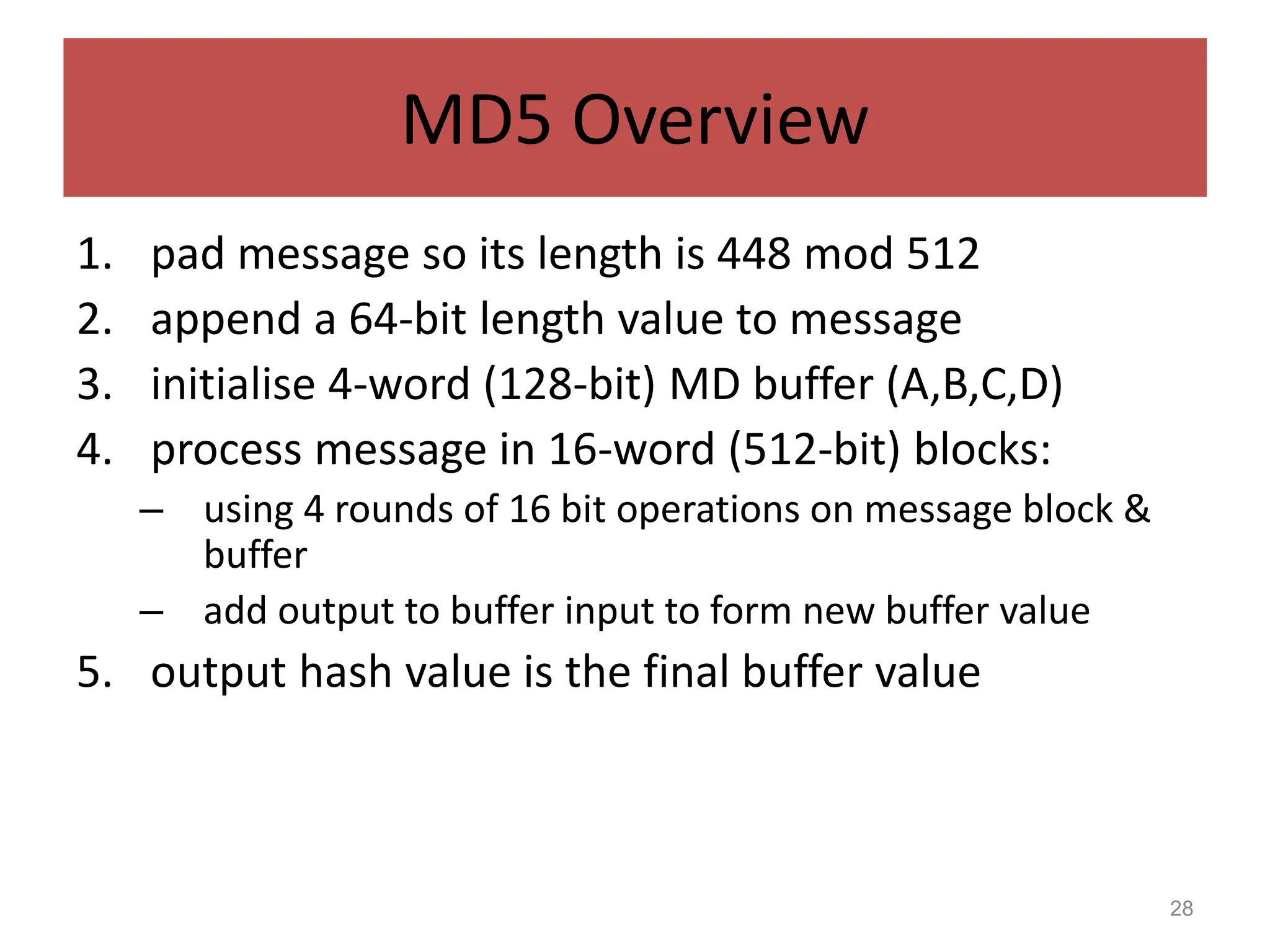
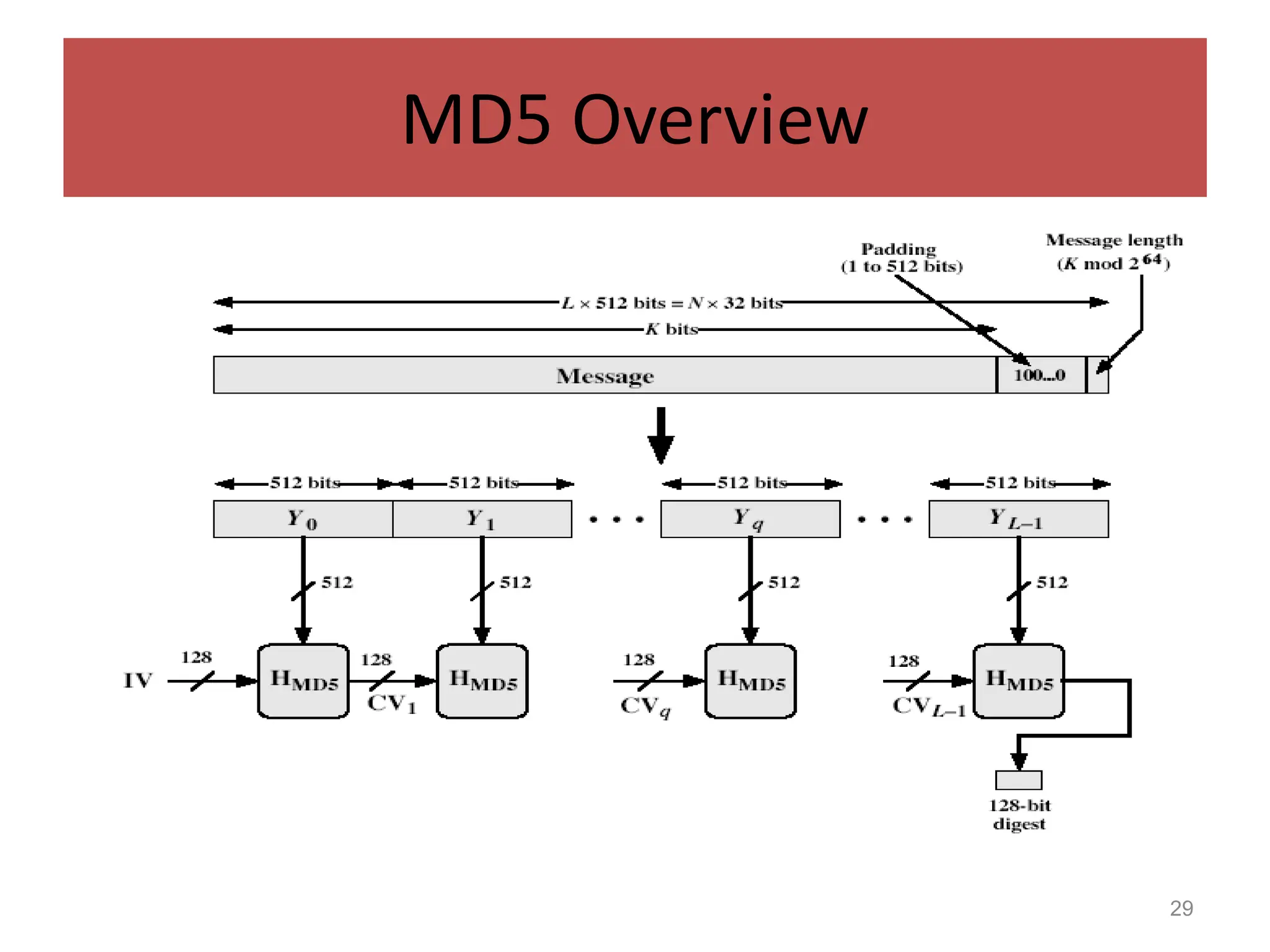
![30
MD5 Compression Function
• each round has 16 steps of the form:
a = b+((a+g(b,c,d)+X[k]+T[i])<<<s)
• a,b,c,d refer to the 4 words of the buffer, but used in
varying permutations
– note this updates 1 word only of the buffer
– after 16 steps each word is updated 4 times
• where g(b,c,d) is a different nonlinear function in
each round (F,G,H,I)
• T[i] is a constant value derived from sin](https://image.slidesharecdn.com/unit3class1-240403081432-019ab78d/75/UNIT3_class-1-ppt-CRYPTOGRAPHY-NOTES-AND-NETWORK-30-2048.jpg)
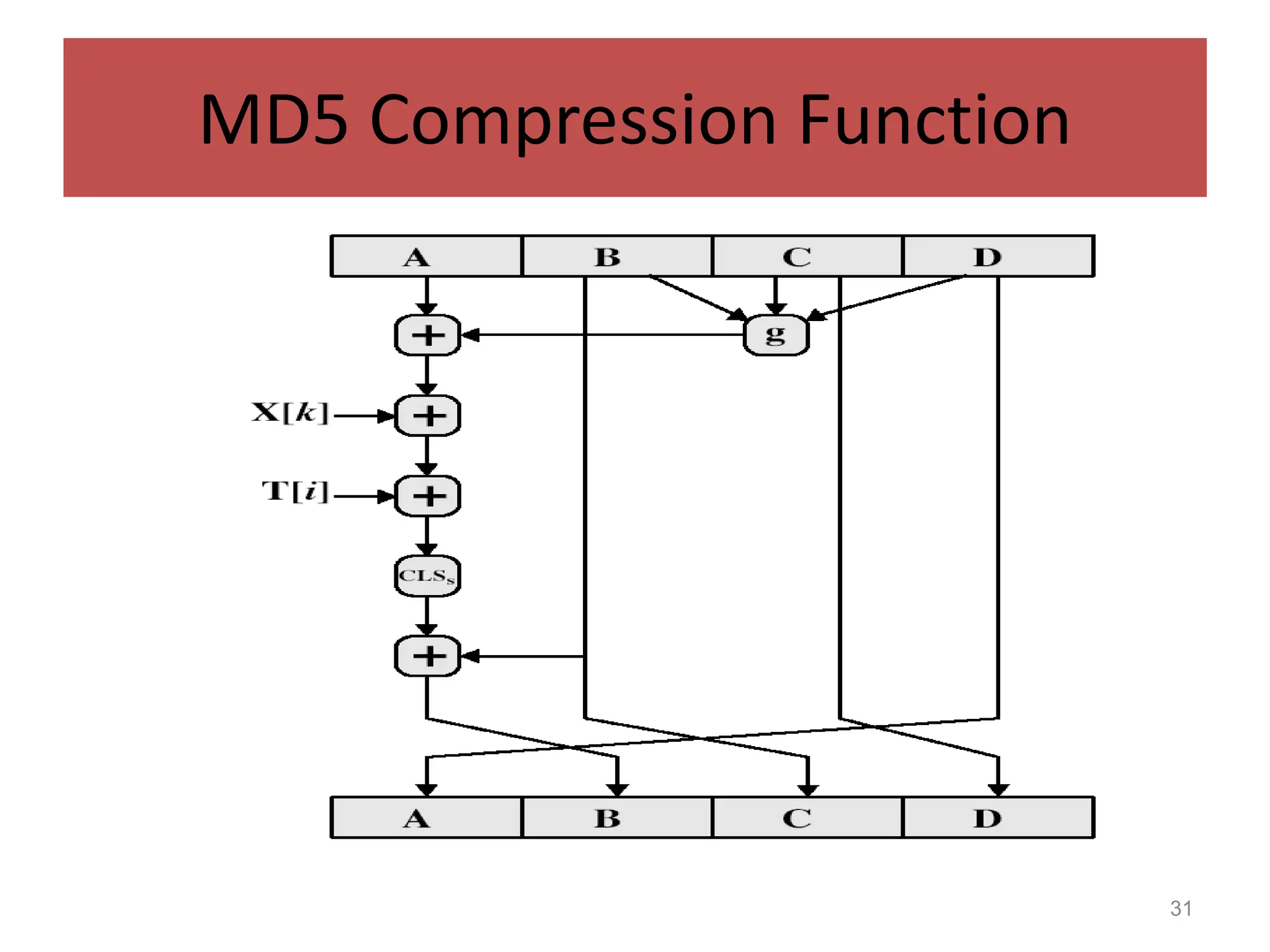
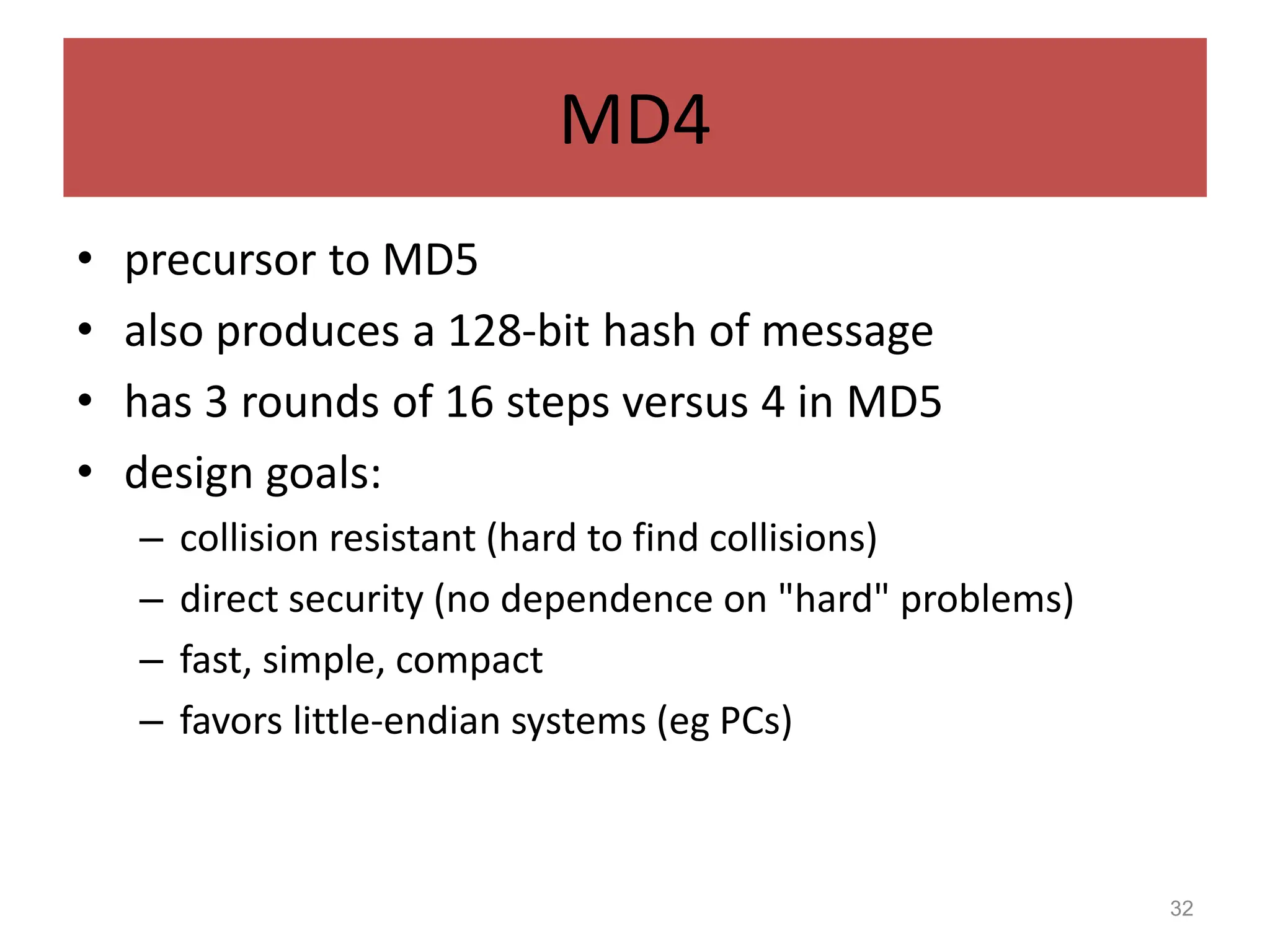


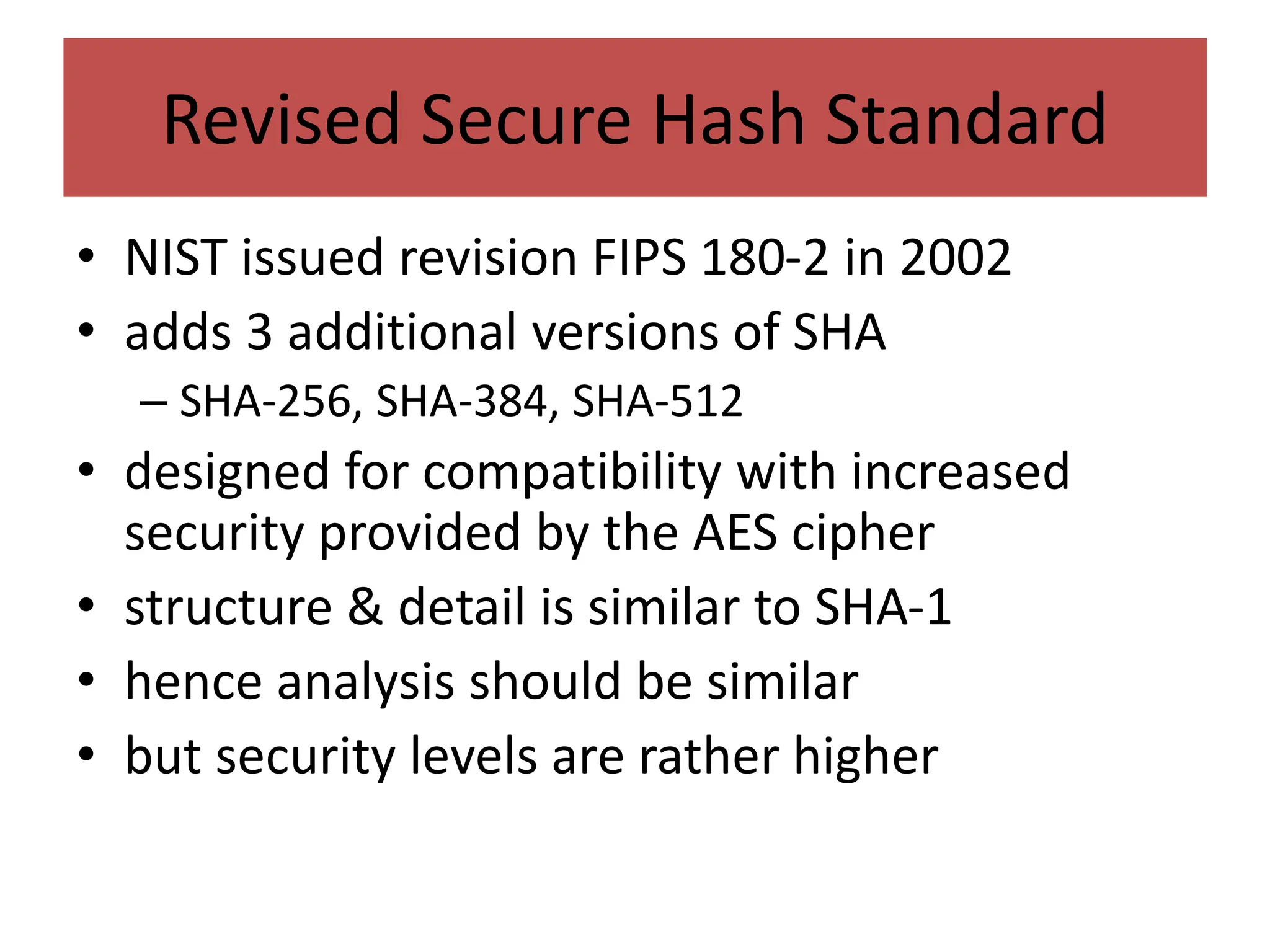
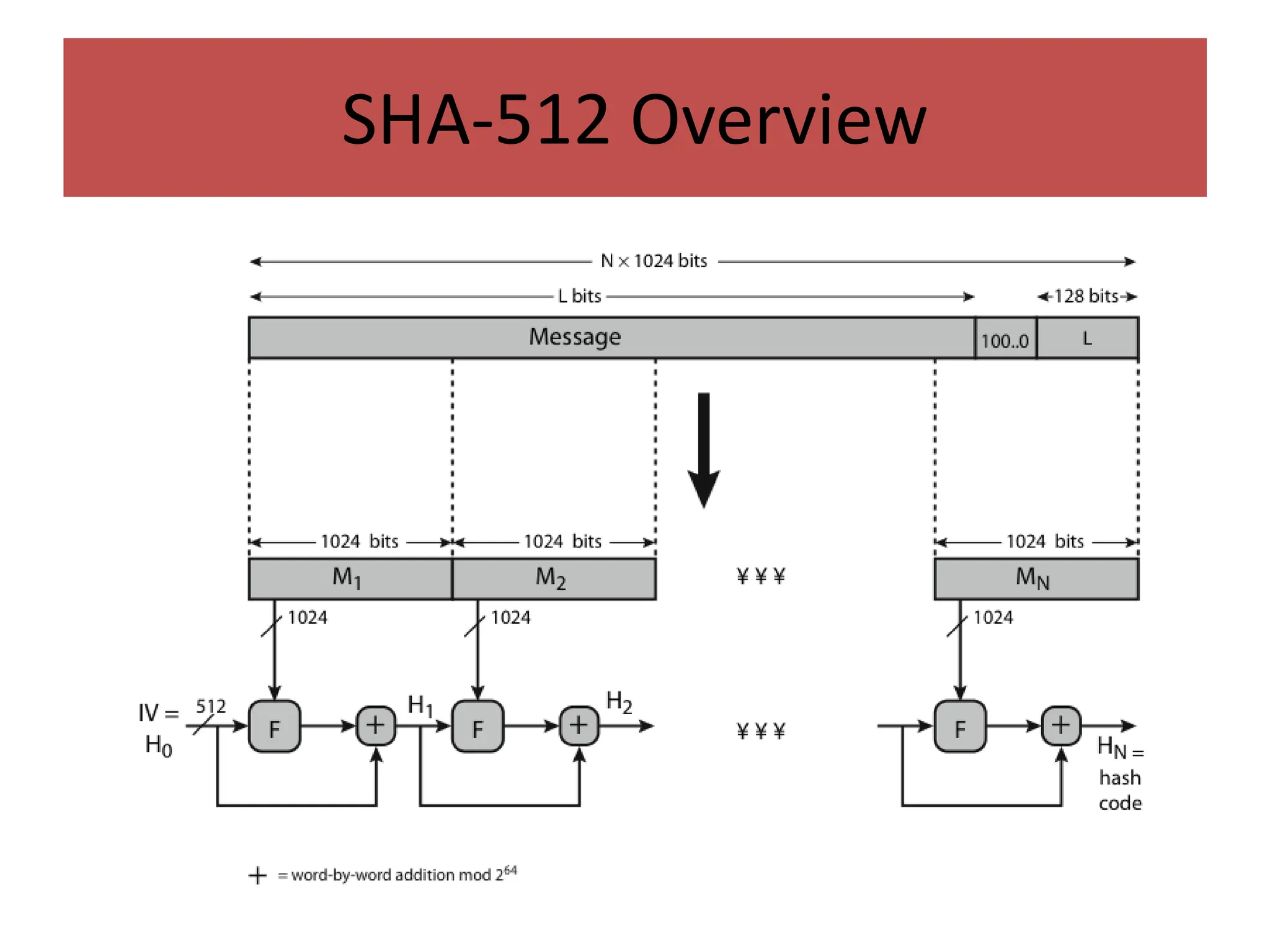
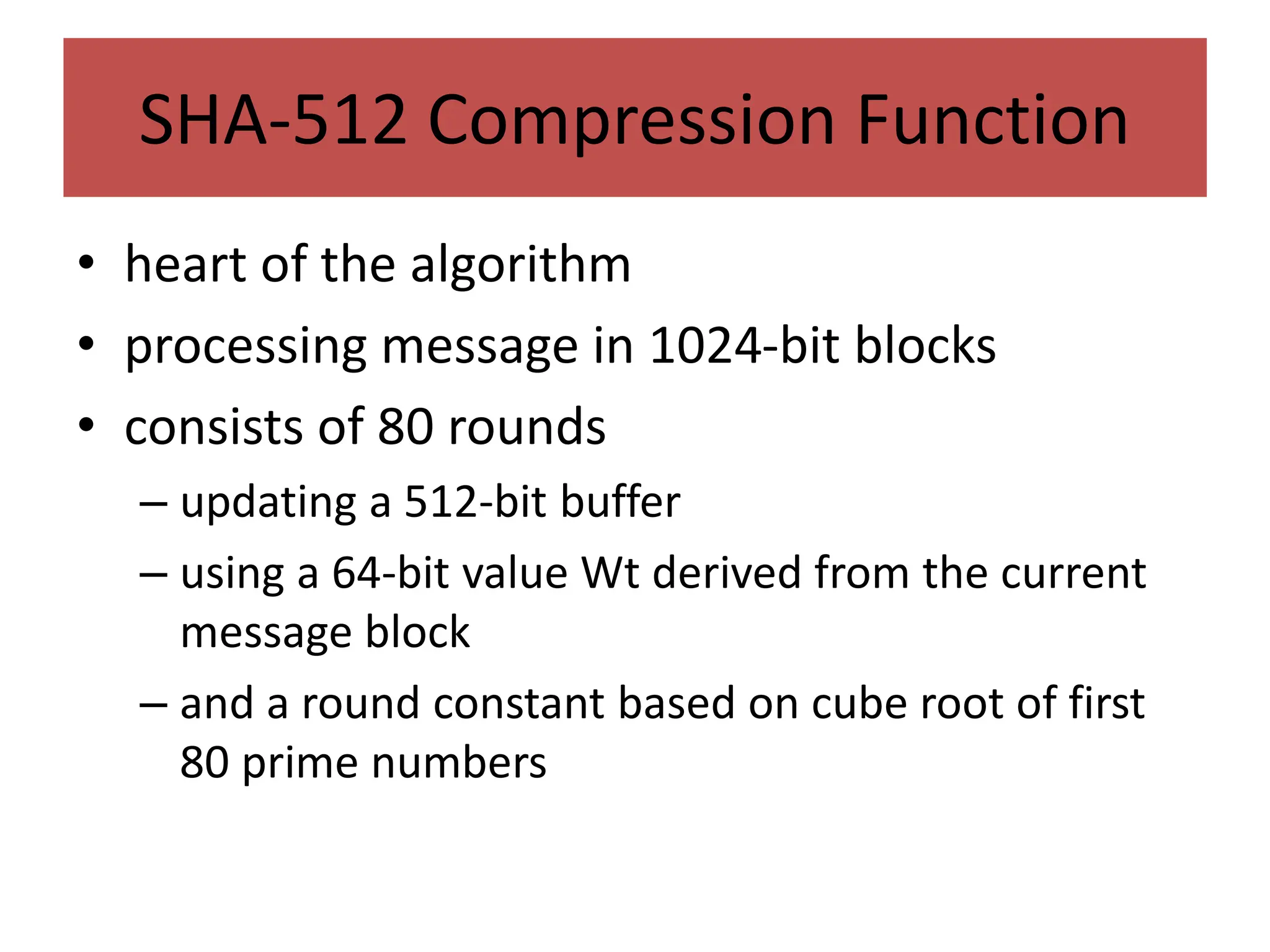

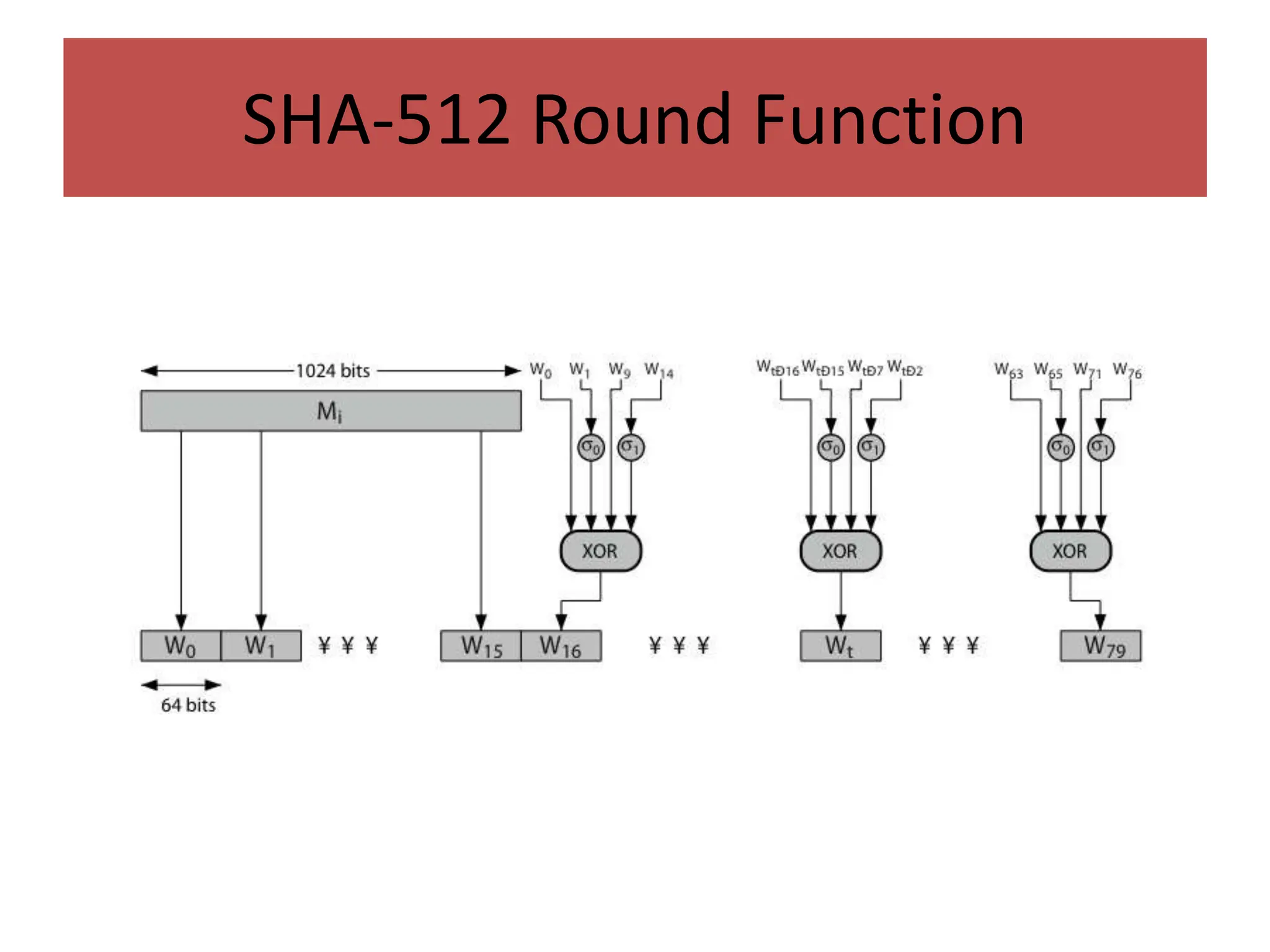

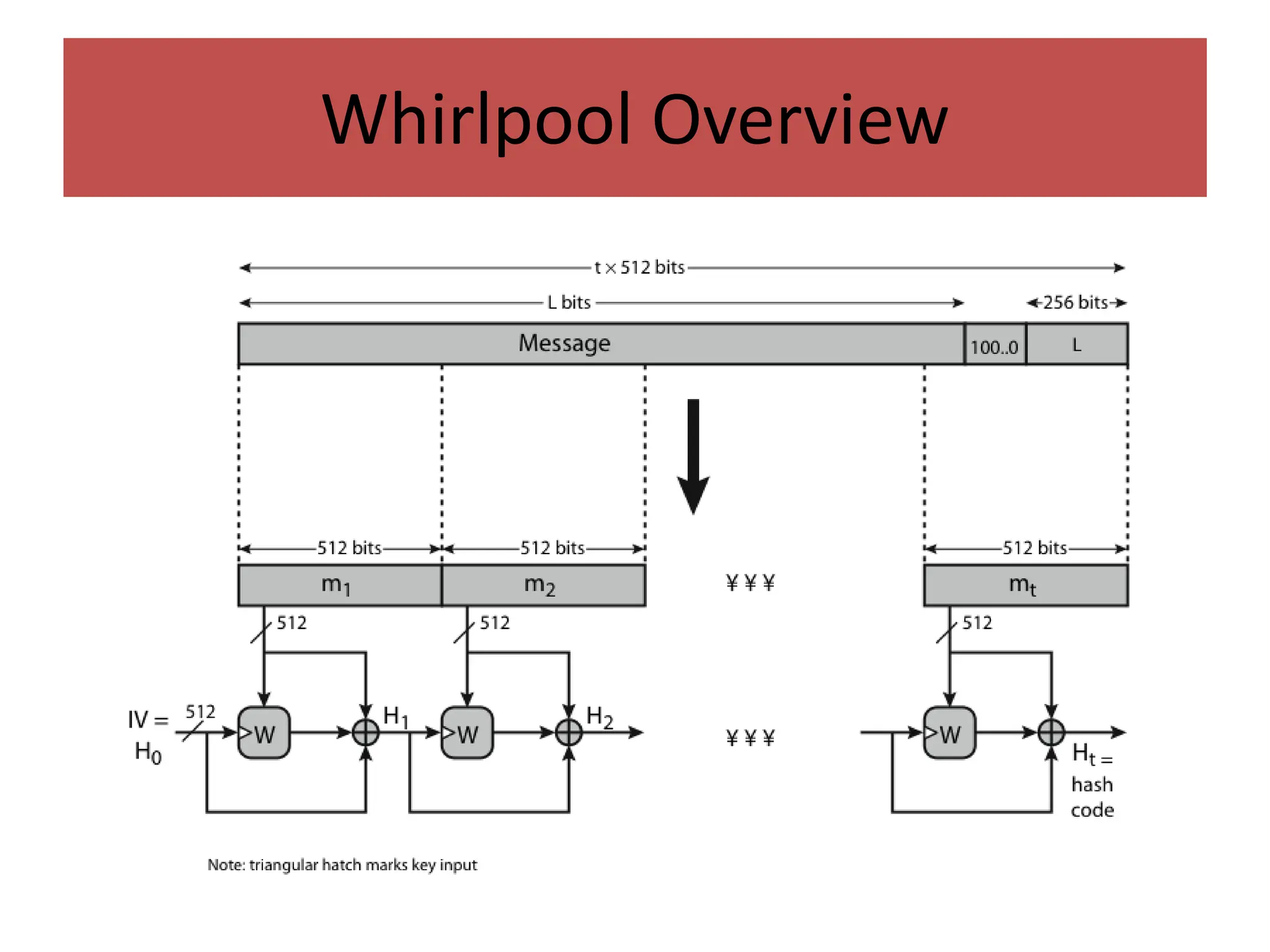
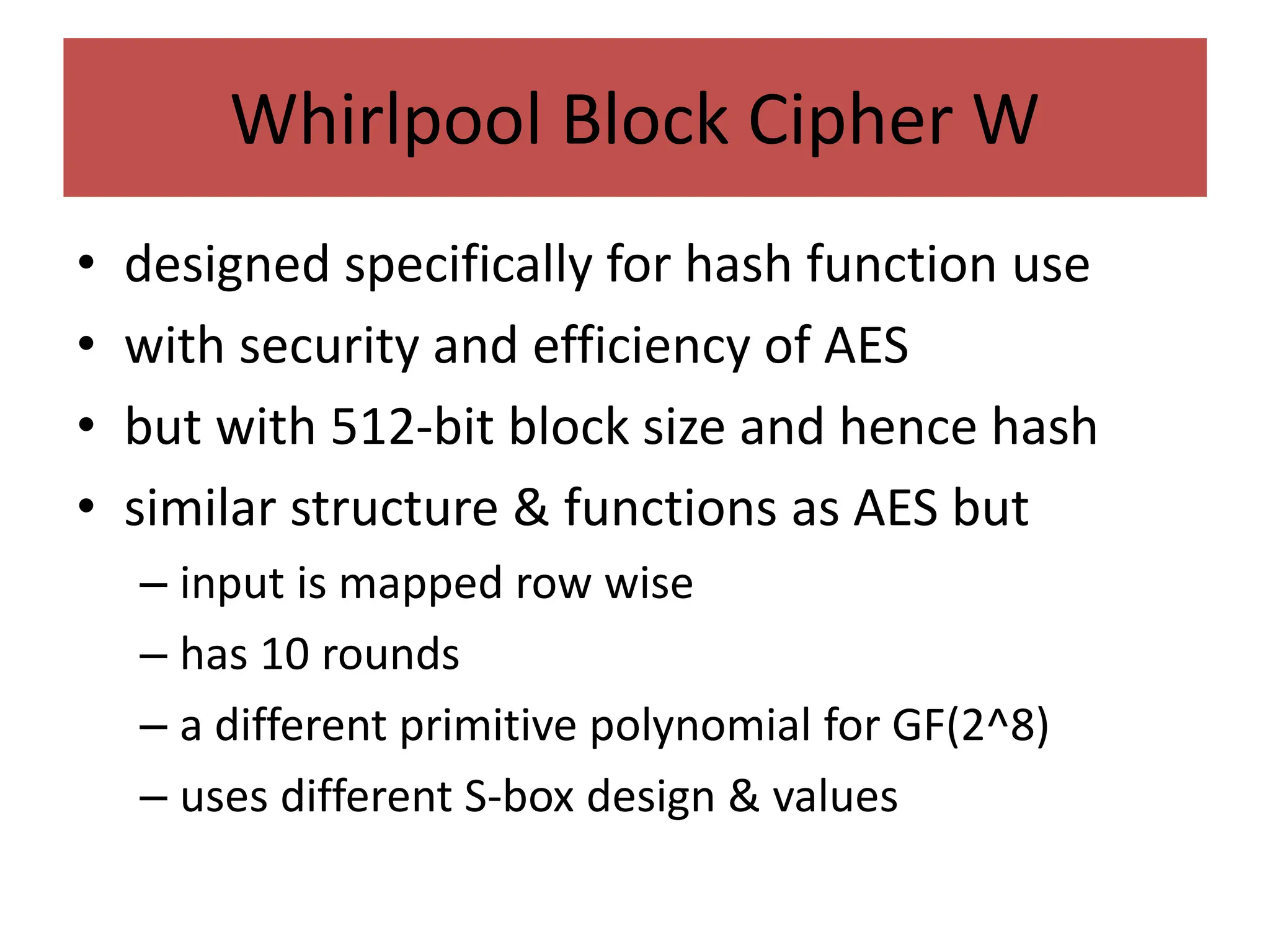
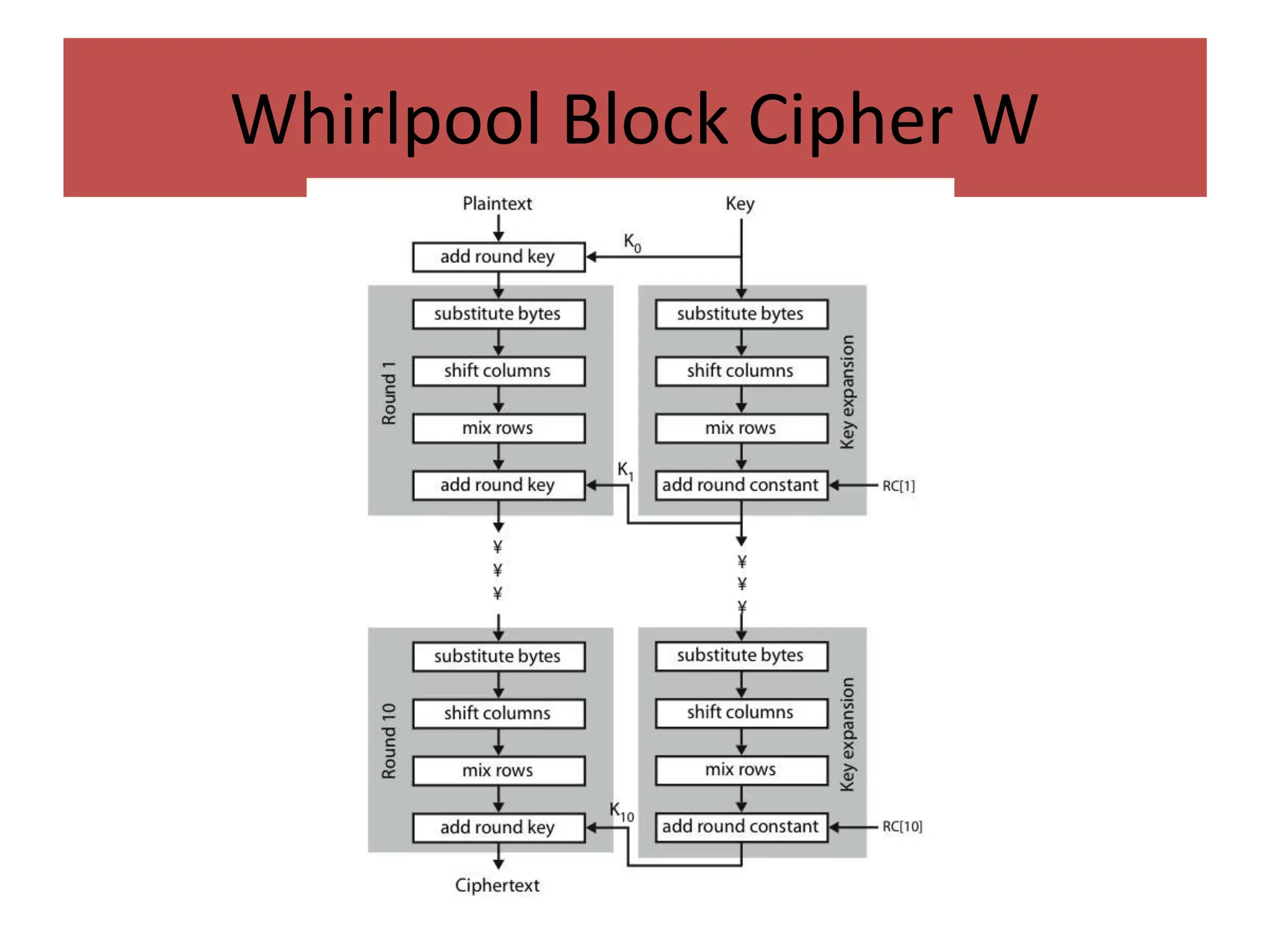
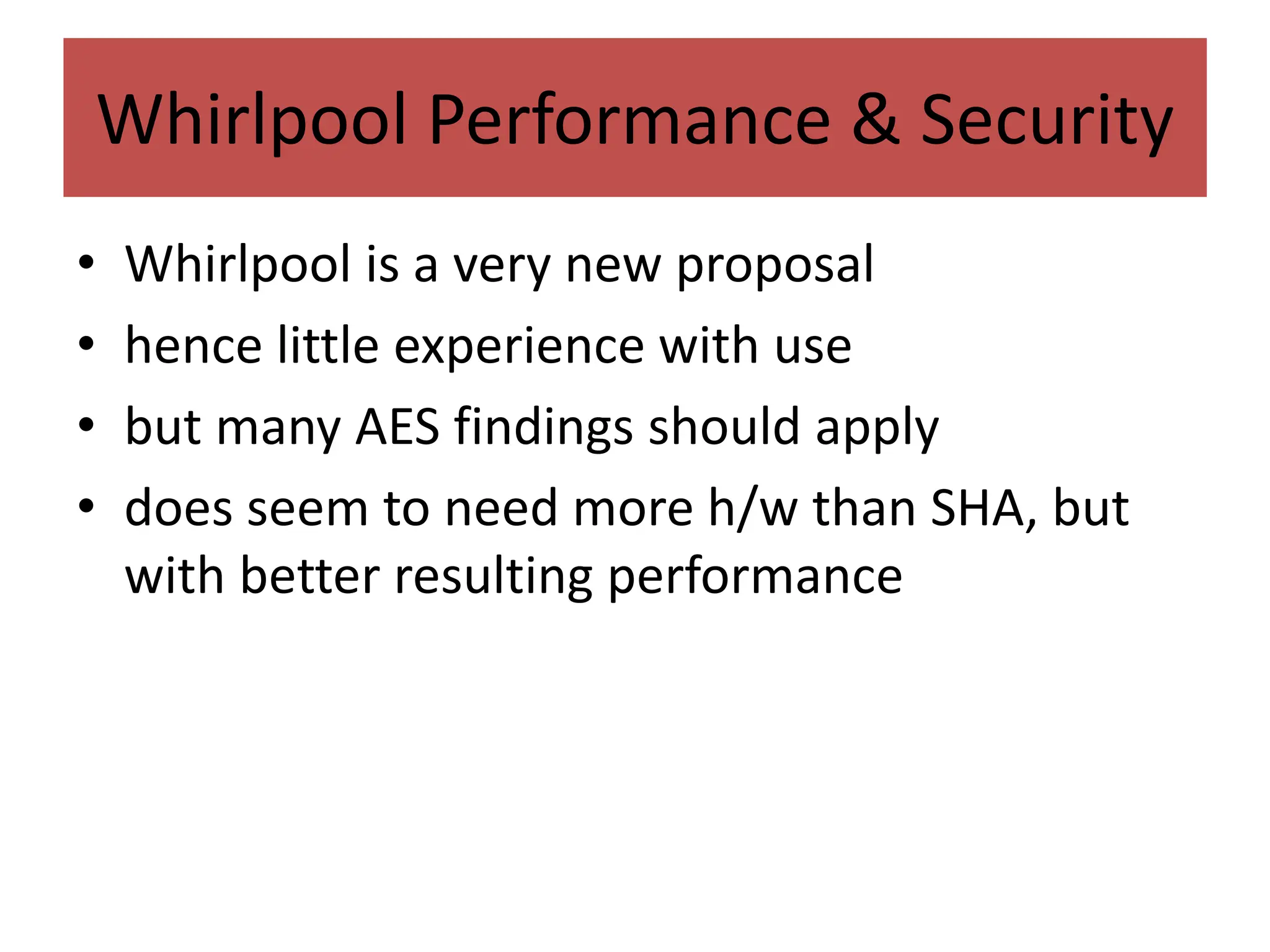
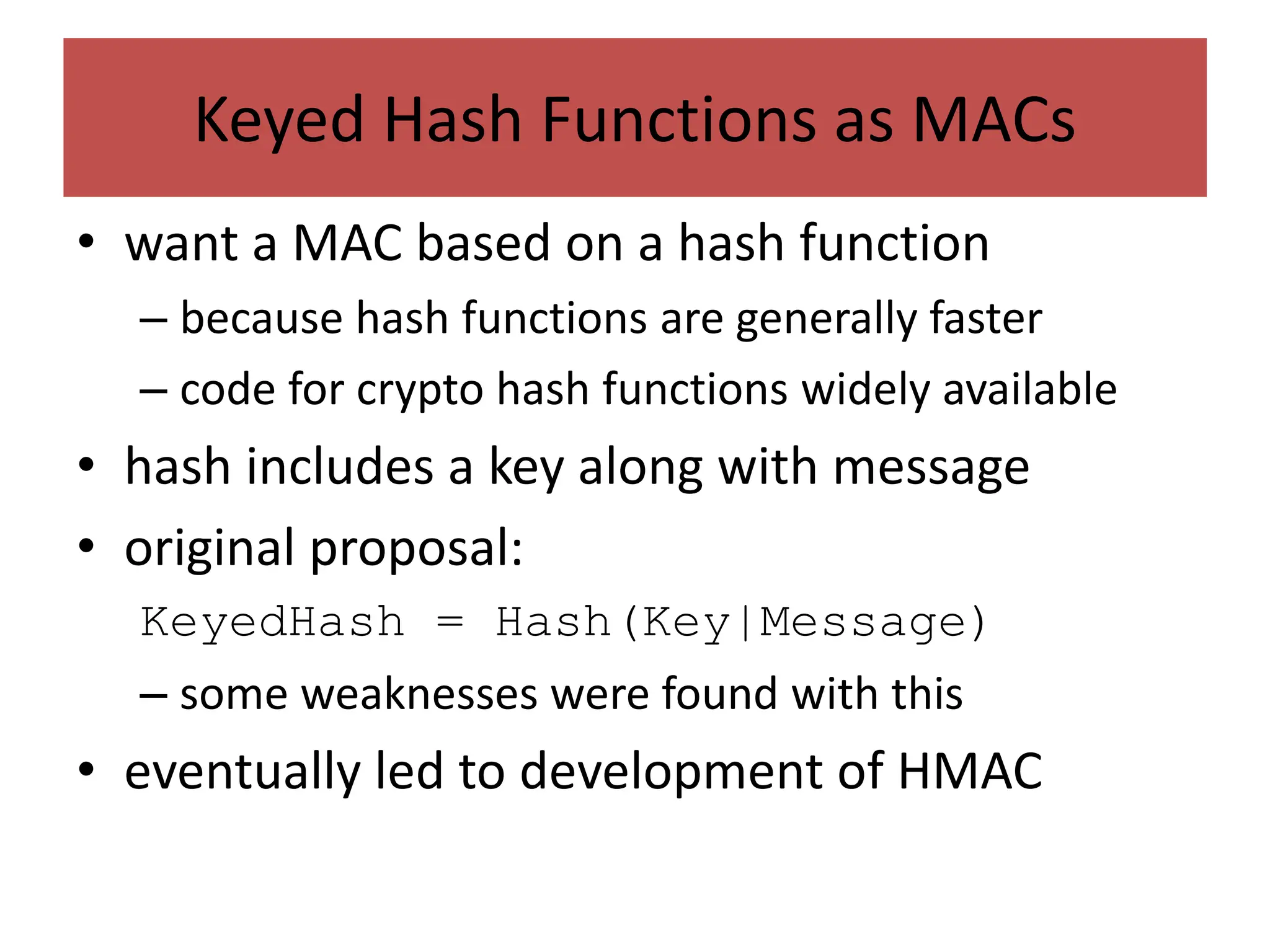
![HMAC
• specified as Internet standard RFC2104
• uses hash function on the message:
HMACK = Hash[(K+ XOR opad) ||
Hash[(K+ XOR ipad)||M)]]
• where K+ is the key padded out to size
• and opad, ipad are specified padding constants
• overhead is just 3 more hash calculations than the
message needs alone
• any hash function can be used
– eg. MD5, SHA-1, RIPEMD-160, Whirlpool](https://image.slidesharecdn.com/unit3class1-240403081432-019ab78d/75/UNIT3_class-1-ppt-CRYPTOGRAPHY-NOTES-AND-NETWORK-46-2048.jpg)
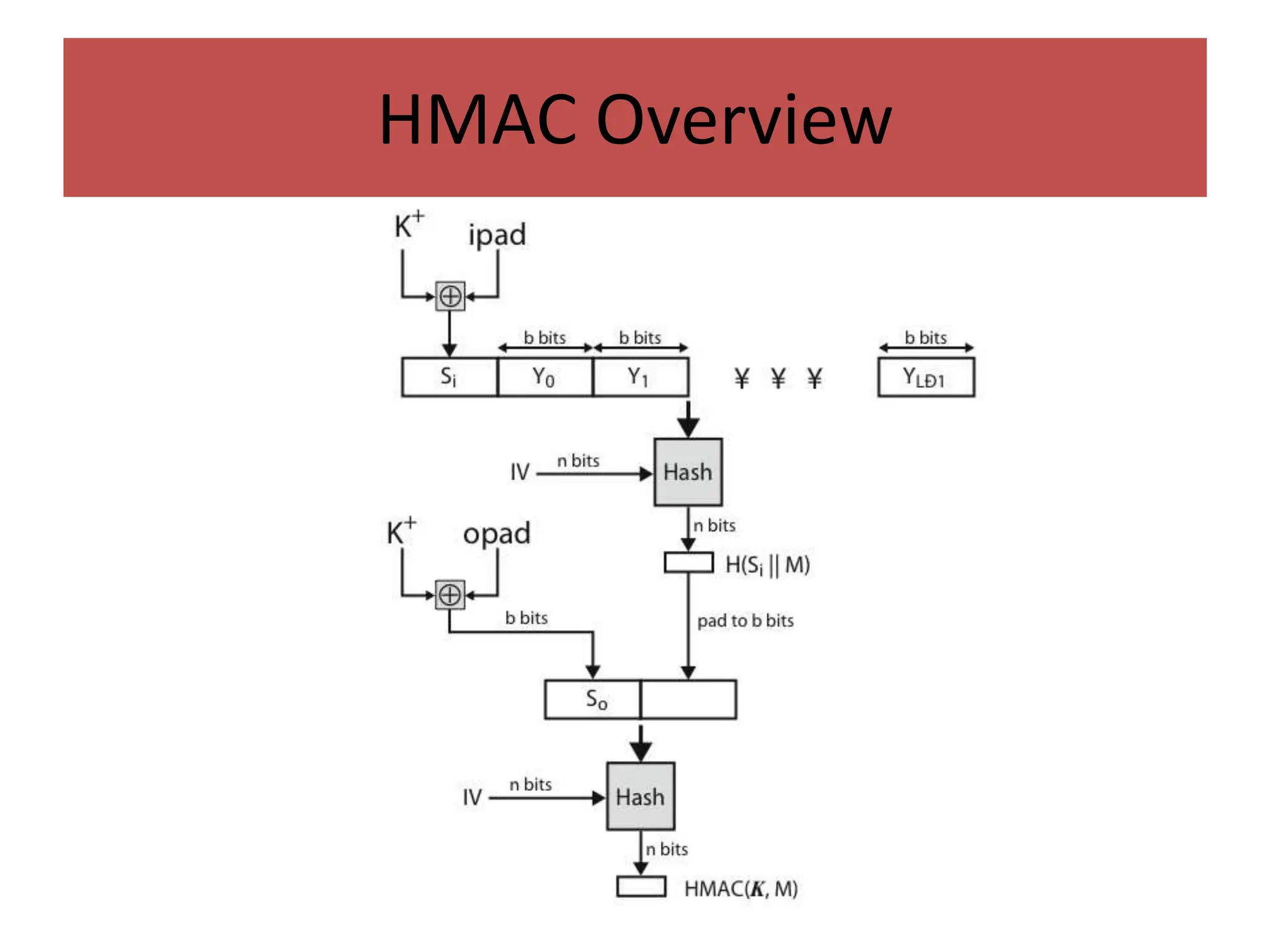

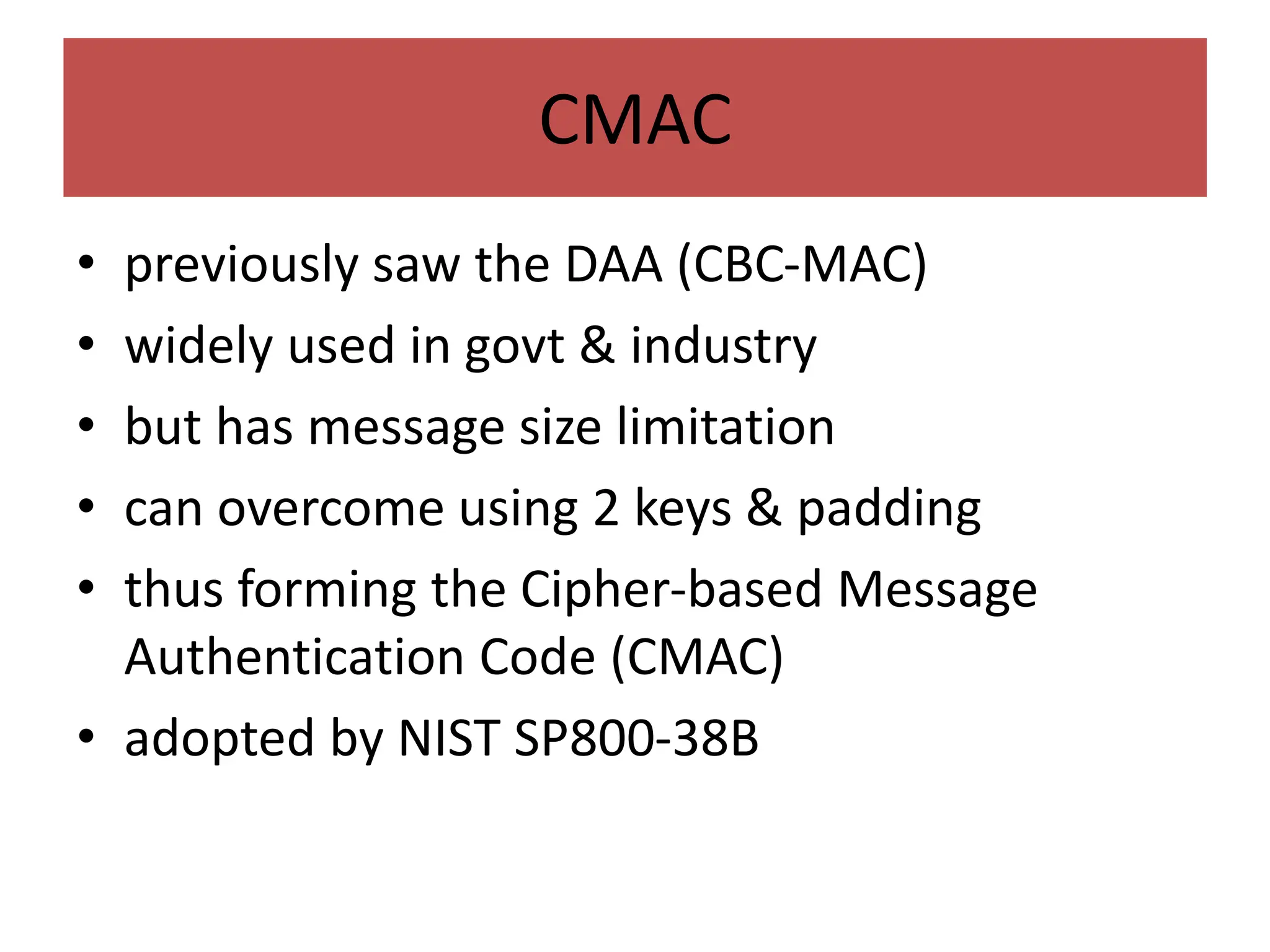
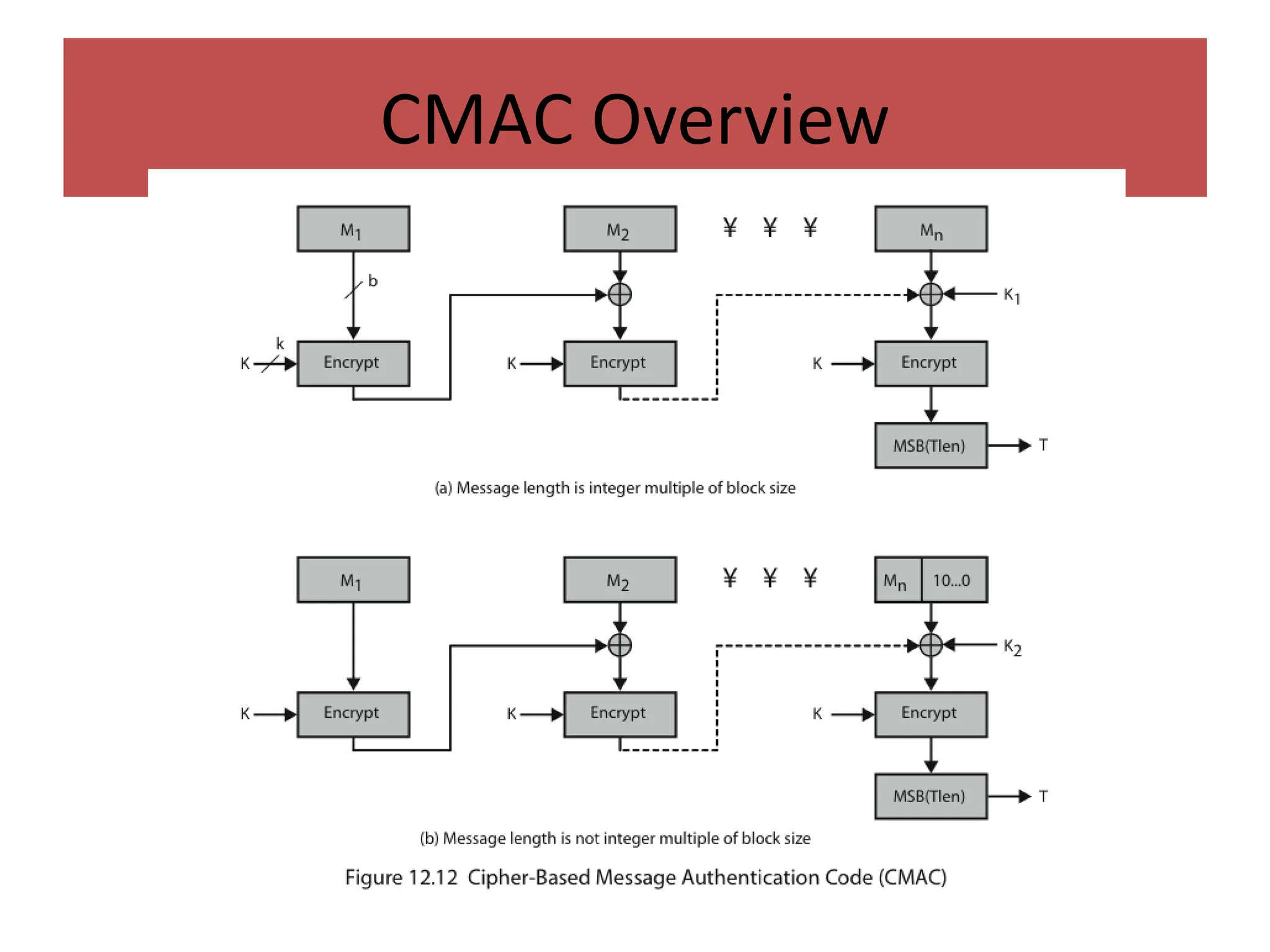
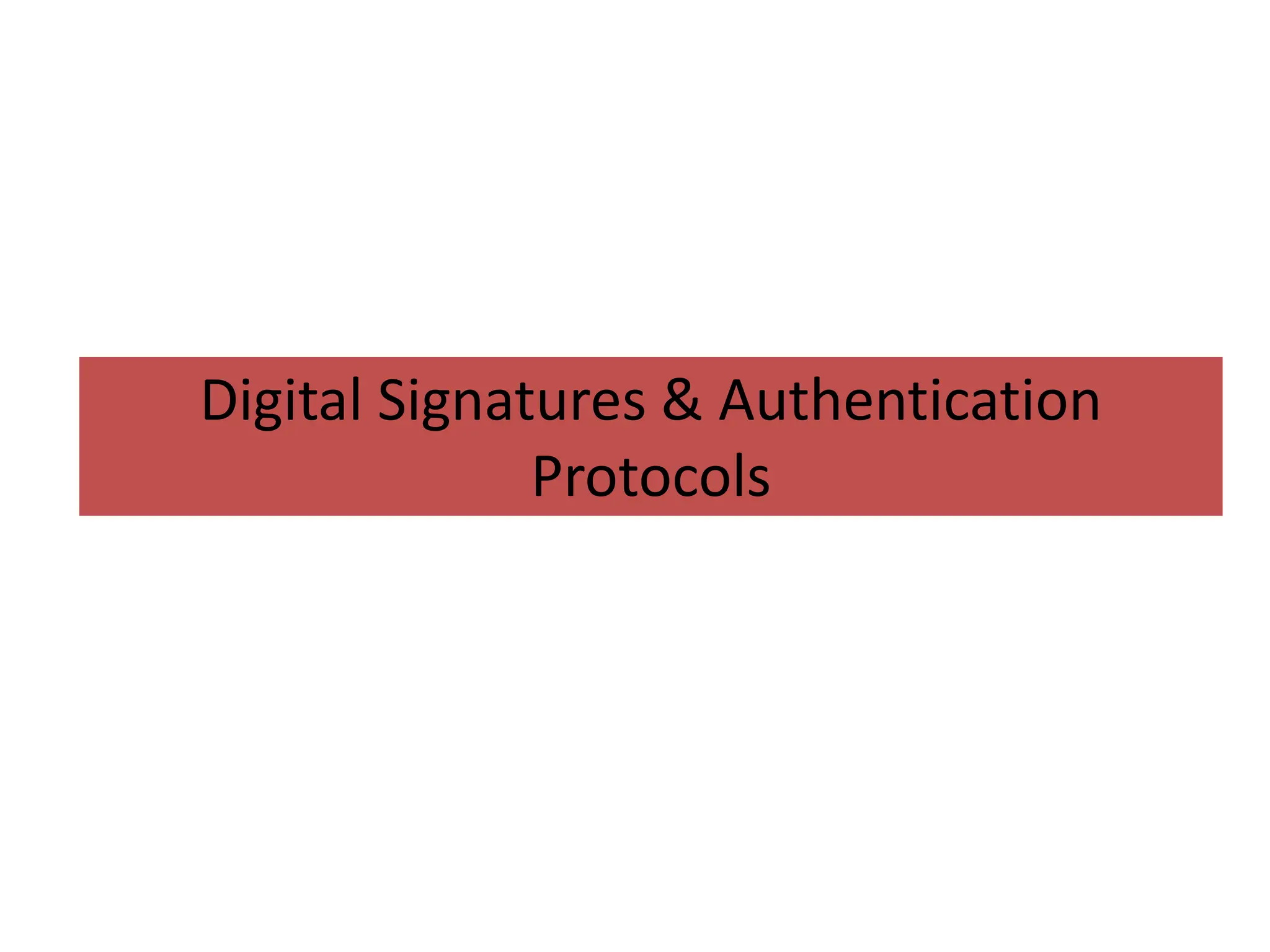

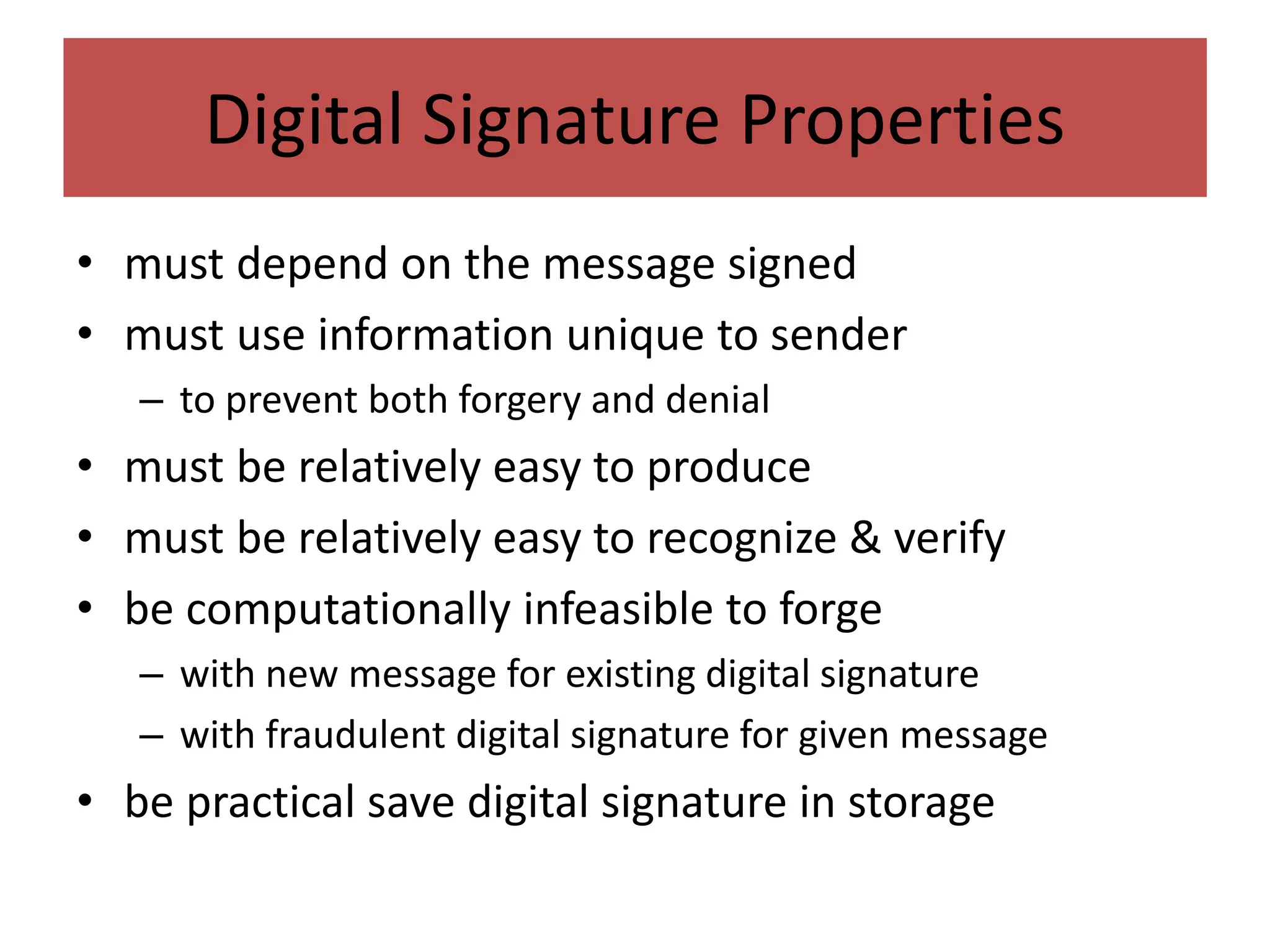

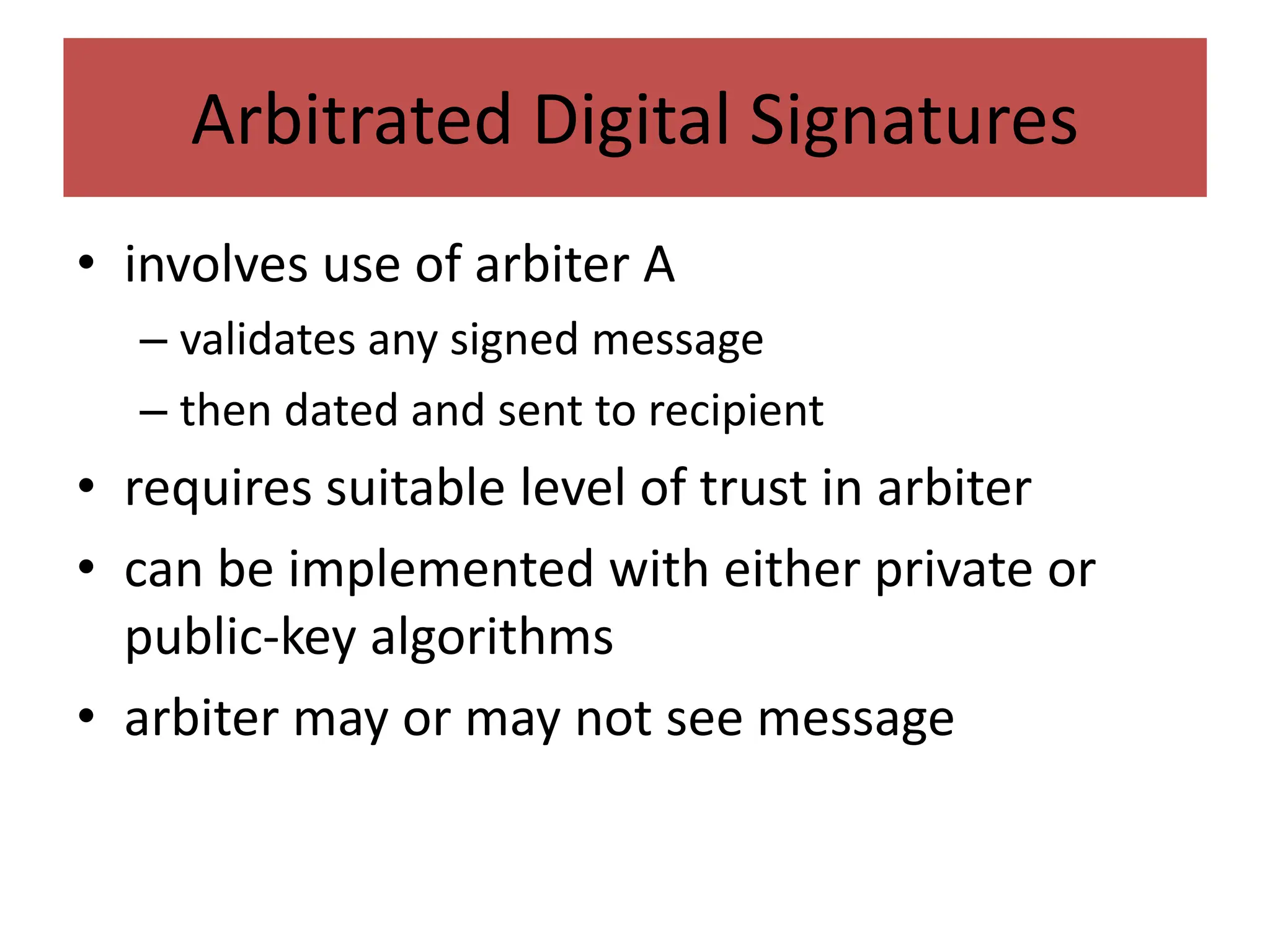
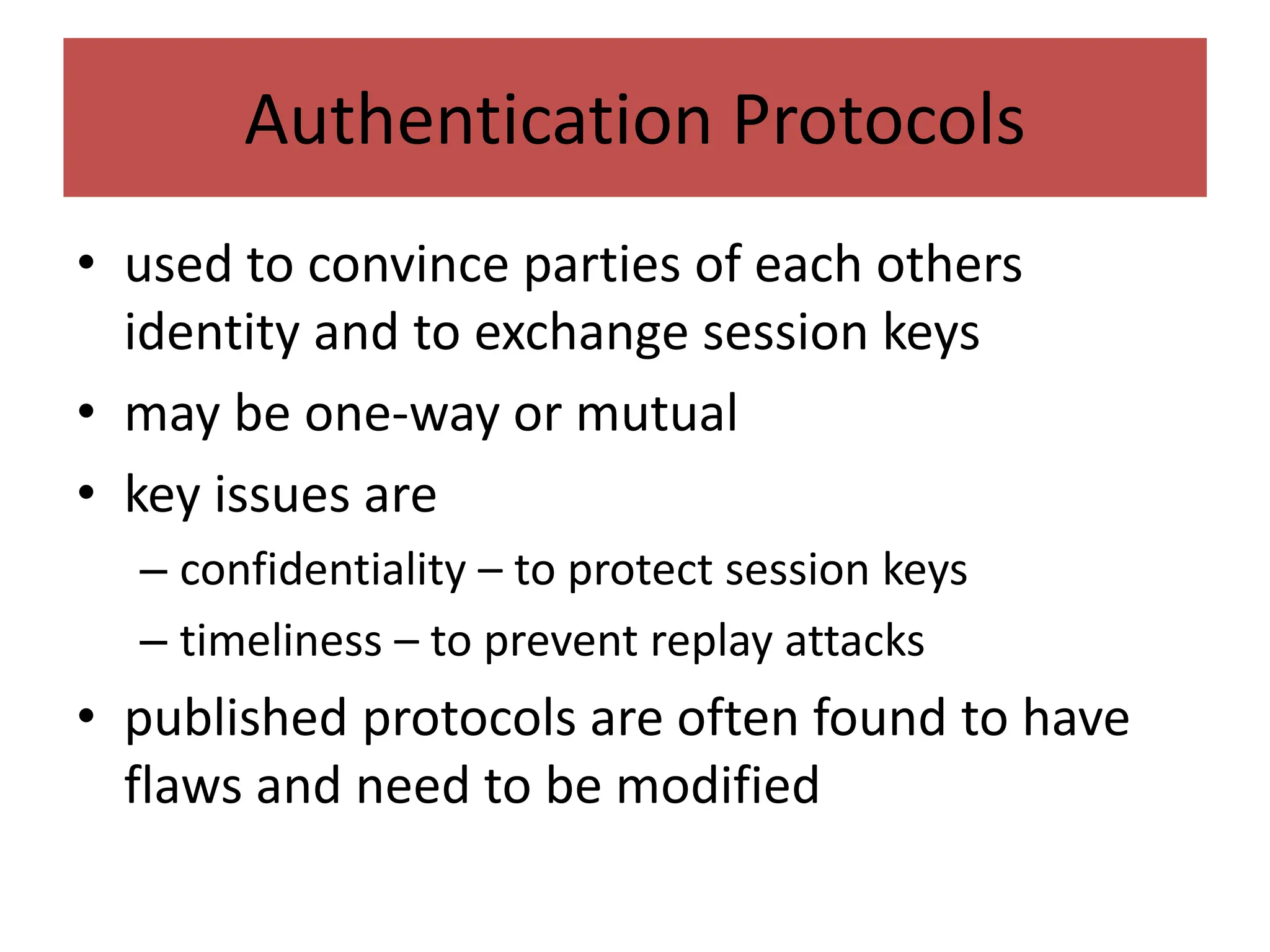
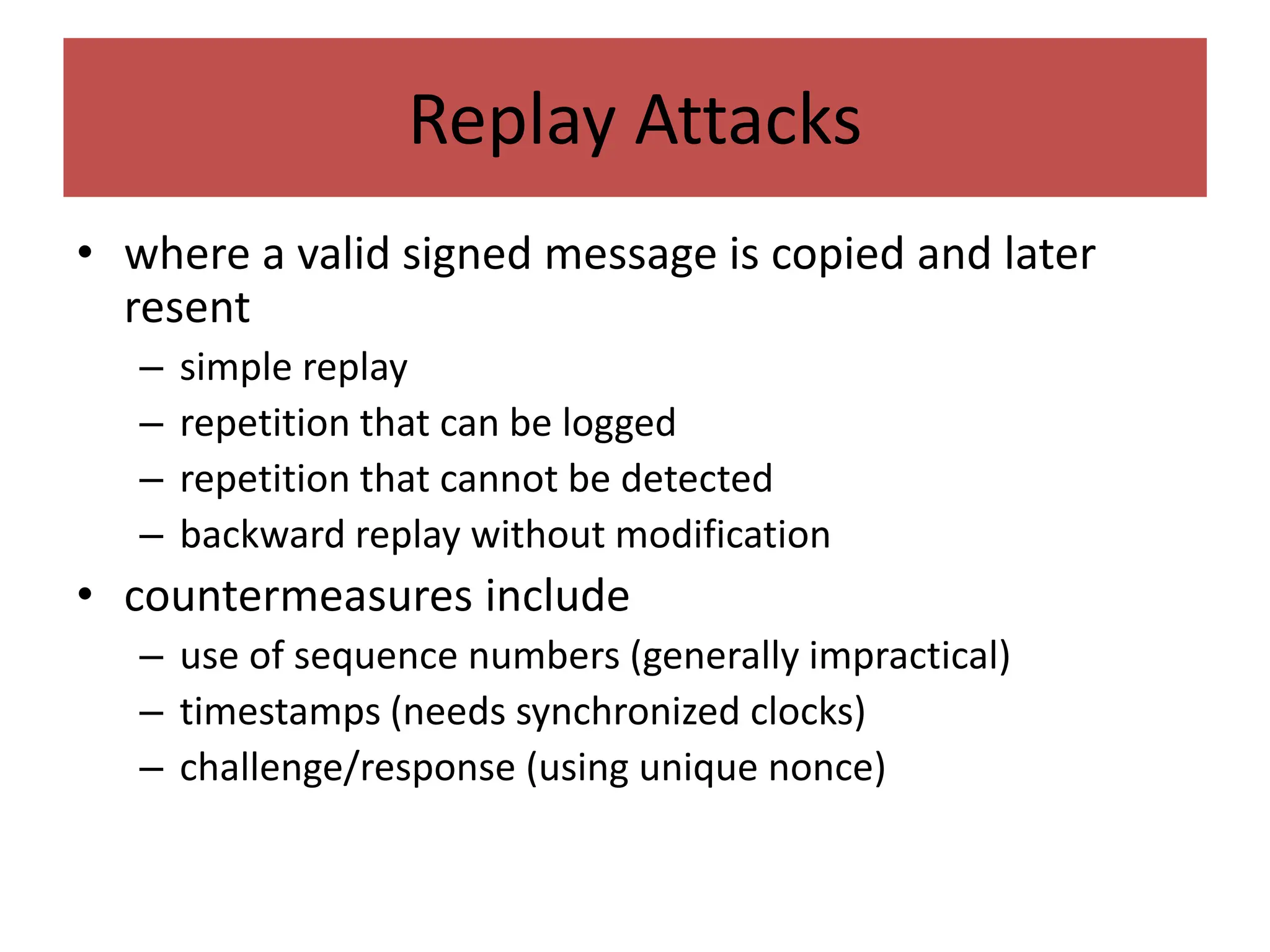
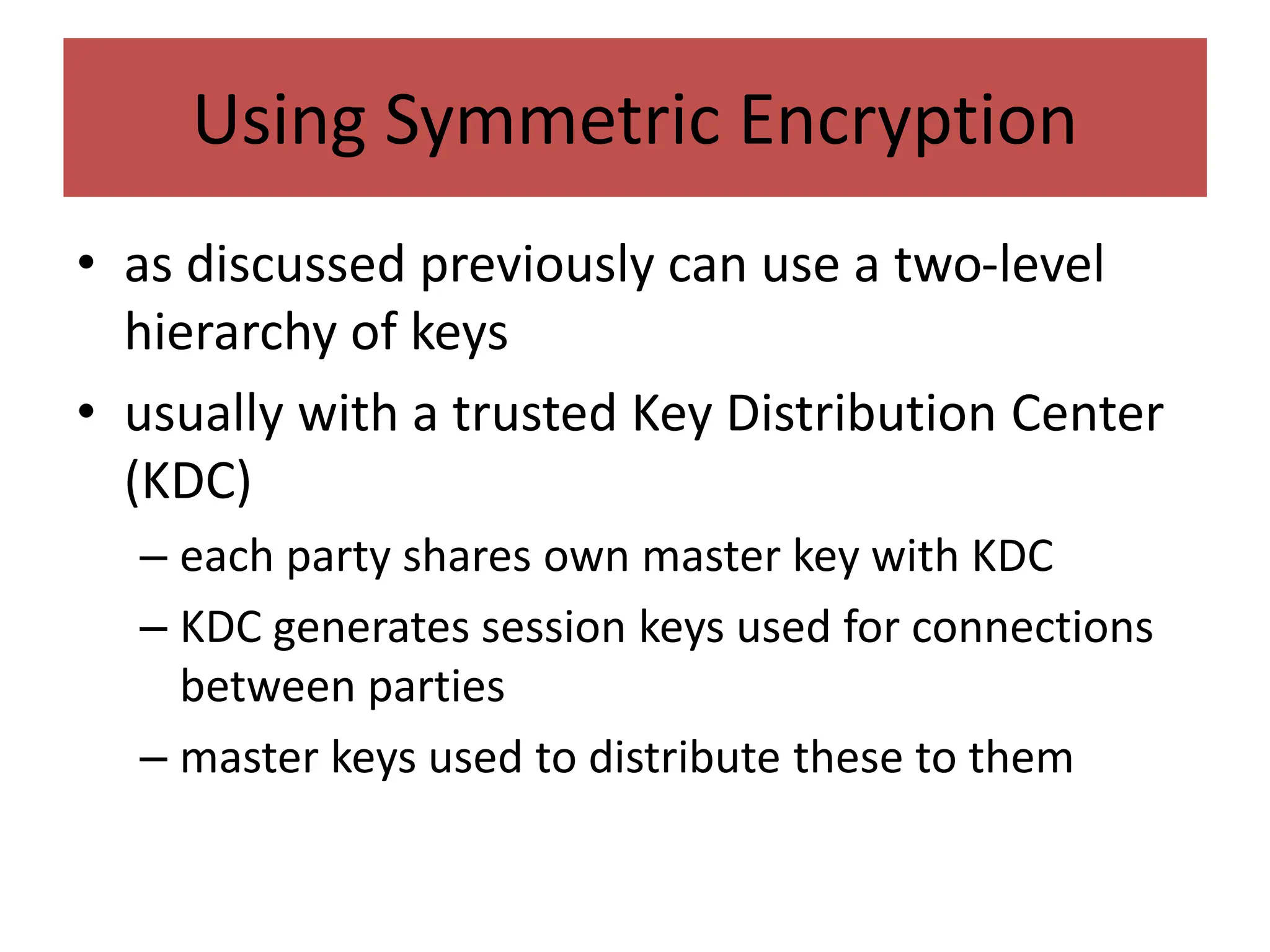
![Needham-Schroeder Protocol
• original third-party key distribution protocol
• for session between A B mediated by KDC
• protocol overview is:
1. A->KDC: IDA || IDB || N1
2. KDC -> A: EKa[Ks || IDB || N1 || EKb[Ks||IDA] ]
3. A -> B: EKb[Ks||IDA]
4. B -> A: EKs[N2]
5. A -> B: EKs[f(N2)]](https://image.slidesharecdn.com/unit3class1-240403081432-019ab78d/75/UNIT3_class-1-ppt-CRYPTOGRAPHY-NOTES-AND-NETWORK-59-2048.jpg)
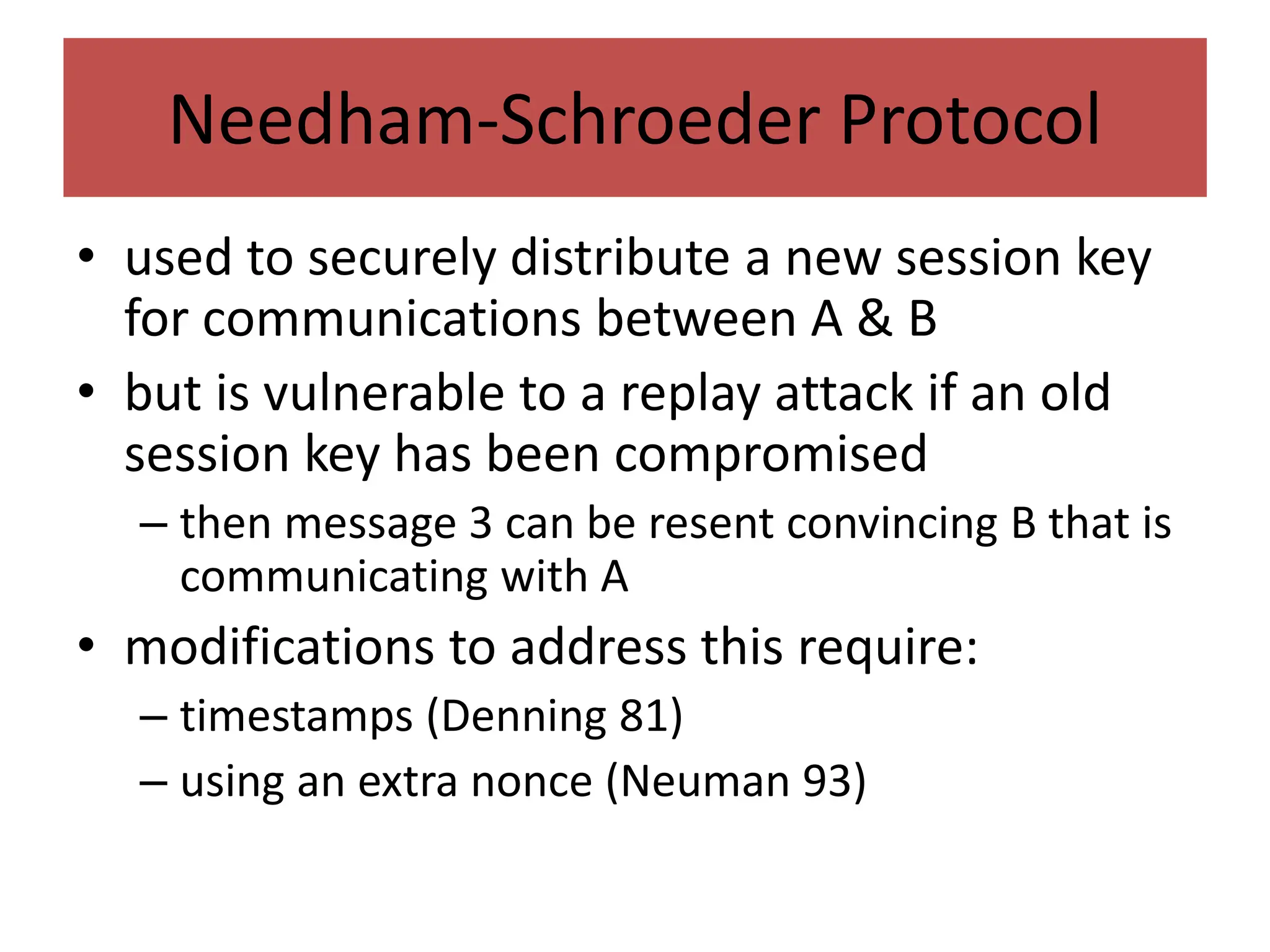
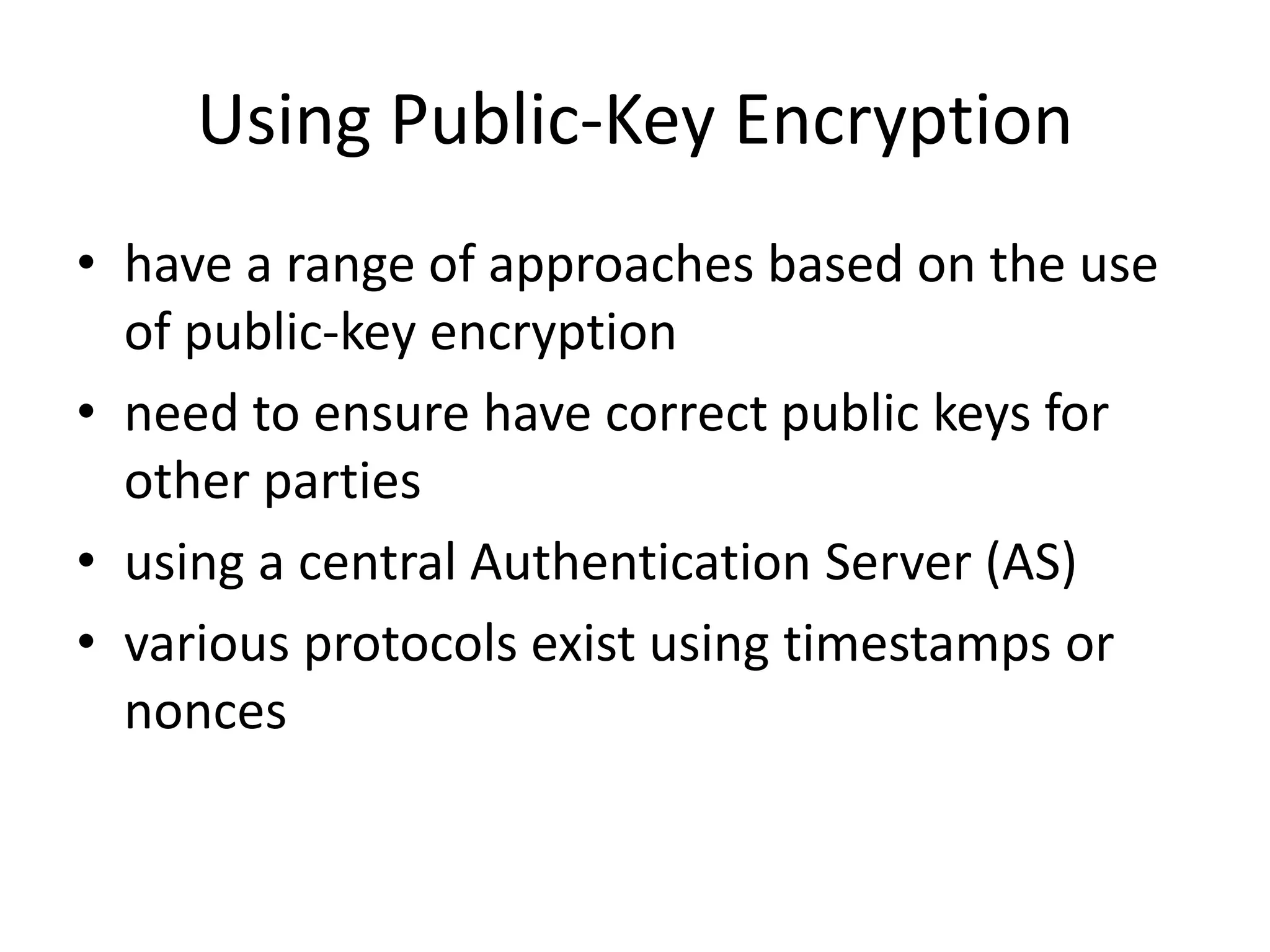
![Denning AS Protocol
• Denning 81 presented the following:
1. A -> AS: IDA || IDB
2. AS -> A: EPRas[IDA||PUa||T] || EPRas[IDB||PUb||T]
3. A -> B: EPRas[IDA||PUa||T] || EPRas[IDB||PUb||T] ||
EPUb[EPRas[Ks||T]]
• note session key is chosen by A, hence AS need not
be trusted to protect it
• timestamps prevent replay but require synchronized
clocks](https://image.slidesharecdn.com/unit3class1-240403081432-019ab78d/75/UNIT3_class-1-ppt-CRYPTOGRAPHY-NOTES-AND-NETWORK-62-2048.jpg)
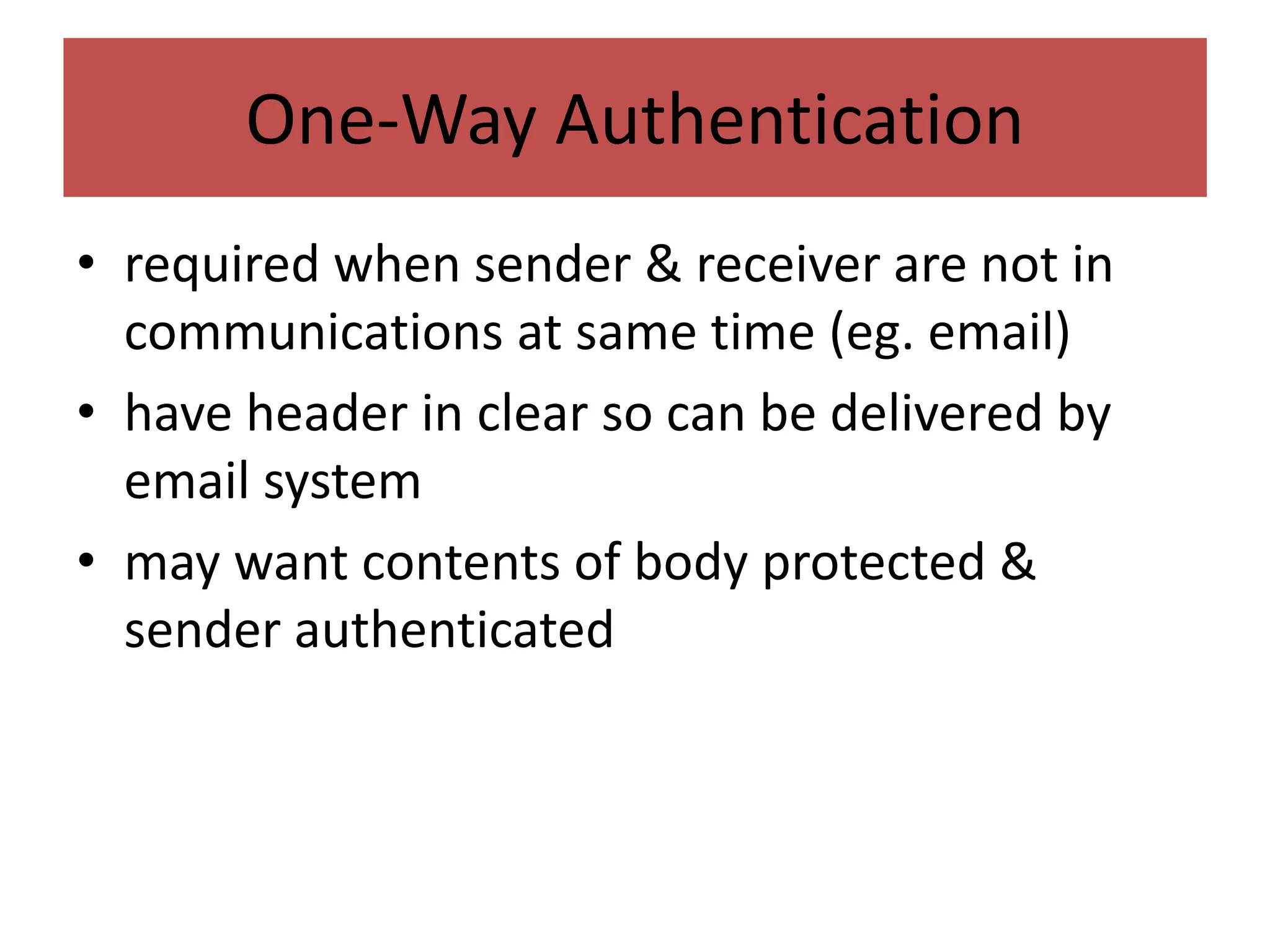
![Using Symmetric Encryption
• can refine use of KDC but can’t have final
exchange of nonces, vis:
1. A->KDC: IDA || IDB || N1
2. KDC -> A: EKa[Ks || IDB || N1 || EKb[Ks||IDA] ]
3. A -> B: EKb[Ks||IDA] || EKs[M]
• does not protect against replays
– could rely on timestamp in message, though email
delays make this problematic](https://image.slidesharecdn.com/unit3class1-240403081432-019ab78d/75/UNIT3_class-1-ppt-CRYPTOGRAPHY-NOTES-AND-NETWORK-64-2048.jpg)
![Public-Key Approaches
• have seen some public-key approaches
• if confidentiality is major concern, can use:
A->B: EPUb[Ks] || EKs[M]
– has encrypted session key, encrypted message
• if authentication needed use a digital signature
with a digital certificate:
A->B: M || EPRa[H(M)] || EPRas[T||IDA||PUa]
– with message, signature, certificate](https://image.slidesharecdn.com/unit3class1-240403081432-019ab78d/75/UNIT3_class-1-ppt-CRYPTOGRAPHY-NOTES-AND-NETWORK-65-2048.jpg)
